Yellowstone National Park was established in 1872 and holds the distinction of being the first national park in the world.
This sprawling wilderness has been designated a UNESCO World Heritage Site and sits in the heart of the United States.
It is known for its unique geothermal features, abundant wildlife, and stunning landscapes.
The park is spread across almost 3,500 square miles, making it impossible to see it all in one day.
However, if you get an early start then here are 10 things to do in Yellowstone National Park in one day. This guide will start from the south entrance and head to the north entrance.
See the map at the end of the post for the location of each stop.
*Disclaimer: This post contains affiliate links. If you book a tour or make a purchase through a link we will receive a small commission at no extra cost to you. Thank you for your support!
10 Things to Do in Yellowstone in One Day
Table of Contents
- 1. Take the Boardwalk Loop at West Thumb Geyser Basin
- 2. Consider the Significance of the Continental Divide
- 3. Admire the Beauty of Kepler Cascades
- 4. Watch Old Faithful Erupt
- 5. Hike to the Grand Prismatic Spring Overlook
- 6. Drive the Scenic Loop to Firehole Falls
- 7. Explore the Best Things to Do in West Yellowstone
- 8. Stop by Gibbon Falls
- 9. See Roaring Mountain Come to Life
- 10. Mammoth Hot Springs
1. Take the Boardwalk Loop at West Thumb Geyser Basin
After entering the south entrance of Yellowstone, the first stop you’ll want to make is at West Thumb Geyser Basin.
This remarkable geothermal area may be one of the smallest geyser basins in Yellowstone and one of the least active, however, it is one of the most scenic.
It is nestled on the western shore of Yellowstone Lake, the largest high-altitude lake in North America.
The basin is punctuated with a stunning array of colorful geothermal pools, lake shore geysers, boiling mud pots, and steaming fumaroles.
Black Pool is the most popular attraction at West Thumb Geyser Basin and is known for its electric blue water lined with vibrant orange algae.
Fishing Cone is also a unique geothermal feature that can be found here. It is located on the shore of the lake and is often submerged underwater in the summer.
In the early 1900s, visitors would reel their catch over to the fishing cone and boil them in the thermal vent before pulling them in. This is how the name “Fishing Cone” was coined.
Abyss Pool is also found here and is known for being one of the deepest pools in Yellowstone.
It is 53 feet deep, but when you look down into the dark water, it appears as if you’re looking into a bottomless abyss.
The Thumb Paint Pots were also a main attraction for tourists in the 1920s.
The bubbling mud resembled the color and texture of the paint on an artist’s palette. However, the paint pots have become less active over the years.
Twin Geysers and Occassional Geyser are also much less active with eruptions reaching only 3-12 feet.
These lakeshore geysers are often dormant with no eruptions at all, so you’re in for a treat if you see some activity.
A boardwalk has been built for visitors to safely enjoy the beauty of the basin as well as Yellowstone Lake and the rugged Absaroka Mountains in the distance.
The entire loop is 0.6 miles and passes by the main features.
Another unique way to experience the basin is from the water during a kayak tour of Yellowstone Lake where you’ll pass by other features and wildlife in the park.
Be sure to keep your eye out for wildlife. We saw this bison on our way to West Thumb Geyser Basin, but you can spot them all throughout the park.
Just keep your distance, stay in your car, and never approach wildlife.
The best time to see animals at Yellowstone is in the early morning or evening. They are also most active in the spring and fall months.
2. Consider the Significance of the Continental Divide
The Continental Divide is one stop that visitors easily pass by without realizing its significance.
However, this geographical feature holds significant importance, not just within the park but throughout North America.
The Continental Divide, often referred to as the “Great Divide,” is an imaginary line that runs along the spine of North America. It stretches from Alaska’s Brooks Range to Mexico’s Sierra Madre Occidental.
The Continental Divide plays a crucial role in shaping North America’s river systems and ecosystems. It marks the division where water flows either east or west.
Specifically, water to the west of the divide flows toward the Pacific Ocean, while water to the east flows toward the Atlantic Ocean or Gulf of Mexico.
If you stand on the divide, you’ll be straddling two distinct watersheds!
The Continental Divide actually passes through two locations within the park, Craig Pass and Two Ocean Plateau.
Craig Pass is the most easily accessible and is located along the Grand Loop Road between West Thumb Geyser Basin and Old Faithful where you’ll find a pullout and informational signs.
Here, you will find Lake Isa which straddles the Continental Divide.
This small lake is saturated with floating lily pads in the summer months, making it a scenic stop as well as informational.
The west side of the lake flows into the Firehole River which eventually drains into the Atlantic Ocean. The east side of the lake flows into the Lewis River and eventually drains into the Pacific Ocean.
3. Admire the Beauty of Kepler Cascades
Kepler Cascades is an impressive waterfall located on the Firehole River.
The river drops approximately 150 feet over a series of three cascades, creating a breathtaking scene set against the backdrop of Yellowstone’s pristine wilderness.
The best part is that it doesn’t take much effort to reach this waterfall!
Kepler Cascades is located right off Grand Loop Rd. You’ll find a viewing platform that can be reached by a short walk from the parking lot.
Water is flowing year-round, but the best time to visit is during the spring and early summer when the cascades are fed by snowmelt.
4. Watch Old Faithful Erupt
Old Faithful Geyser is located just down the road from Kepler Cascades. It is named for its consistent eruptions that take place approximately every 35 minutes to 2 hours.
The famed eruption of Old Faithful sends a plume of scalding water and steam about 90-185 feet into the air.
Although it is not the tallest nor the most consistent geyser in Yellowstone, it is the tallest of the consistent geysers. You may have to read that twice for it to make sense!
Each eruption of Old Faithful lasts anywhere from 1 1/2 to 5 minutes. The intensity and duration of the eruption can vary, with some bursts being more powerful and impressive than others.
What makes this geyser particularly unique is that the eruptions haven’t changed over time. They appear to be erupting with the same frequency and force as the park’s earliest recordings.
While the geothermal activity has shifted and changed over the years throughout the park, Old Faithful has remained true to its name.
Even though the eruption intervals vary, park rangers can generally predict when the next eruption will be based on the duration of the last eruption. See the park website for more information.
Just practice patience when visiting Old Faithful and it will pay off.
Seeing the eruption is one of the most popular things to do in Yellowstone, so expect a crowd.
The parking lot is quite large, but you will still end up circling around looking for a spot during peak travel times.
A boardwalk with wooden benches has been erected around the geyser to accommodate the large summer crowds.
When you see visitors starting to gather around, you may want to grab a seat so that you get a front-row view.
If you have some time after the eruption or while waiting for the next, head over to the visitor center where you can learn more information about this geological wonder.
You can also pick up some trail maps then head out and explore the different walking trails near Old Faithful.
The Geyser Hill Loop Trail starts near Old Faithful and takes you on a boardwalk that loops through the Upper Geyser Basin.
Along the way, you’ll encounter a variety of geothermal features, including colorful hot springs and spouting geysers.
For a panoramic view of the Old Faithful area, consider hiking the Observation Point Trail. It’s a bit steeper but provides a unique perspective of the geyser basin.
The nearby Biscuit Basin to Morning Glory Pool Trail is also a great option. You can reach Morning Glory Pool from Old Faithful but it’s a shorter hike if you drive to the parking lot at Biscuit Basin.
You’ll also want to stop by and check out the Old Faithful Inn.
The Old Faithful Inn is not just a place to stay, it’s a historic landmark that’s deeply intertwined with the park’s history.
The inn was built in 1903-1904 and is considered the largest log structure in the world. As you step inside, it feels like the inn is an enchanting mix of Hogwarts and the Swiss Family Robinson treehouse.
For a unique experience, consider booking a night at the Old Faithful Inn where you can wake up to views of the geyser right outside your window.
The rooms book up well in advance during peak season, so make your reservations early.
5. Hike to the Grand Prismatic Spring Overlook
Grand Prismatic Spring is located in the Midway Geyser Basin and is undoubtedly one of Yellowstone’s crowning jewels.
It is the largest hot spring in the park at around 300 feet in diameter and more than 120 feet deep. In fact, it is the third largest hot spring in the world.
Not only is the size impressive, but the vibrant display of colors is what really attracts visitors.
The vivid hues of blue, green, and orange surrounding the deep cerulean pool make it one of the park’s most photographed attractions.
The vibrant hues result from thermophiles, heat-loving microorganisms, that thrive in the spring’s varying temperatures.
To get an up-close look at the spring, you can follow the raised boardwalks that traverse the Midway Geyser Basin.
To reach the boardwalk, you’ll park at the Midway Geyser Basin Trailhead parking lot. The lot is relatively small and extremely busy.
During the summer, it’s not uncommon to have cars backed up along the road for almost a mile just waiting for a parking spot.
If you are visiting during peak season, plan to arrive early in the morning or later in the evening.
While the boardwalk offers fantastic views, one of the most spectacular ways to appreciate Grand Prismatic Spring is from above.
The Grand Prismatic Spring Overlook Trail offers a bird’s-eye perspective that showcases the spring’s entire palette of colors.
If you are short on time or the parking is full, I would recommend skipping the boardwalk and heading straight to the Grand Prismatic Spring Overlook Trail.
The parking lot is located at the Fairy Falls Trailhead parking area. It is about 2.8 miles south of the Midway Geyser Basin parking lot and it isn’t nearly as crowded.
You’ll also get a beautiful view of the scenic Firehole River from the trail.
The trail is 1.5 miles roundtrip and is considered fairly easy. There is a steady incline towards the end, but the elevation gain is only 200 feet.
Once you reach the top, you’ll find a viewing deck that offers the most breathtaking view of the Grand Prismatic Spring. The colors are much more saturated when viewing the spring from above.
The hike is best enjoyed on a clear day when the sunlight enhances the colors of the spring and minimizes shadows.
If you come too early in the morning, the steam coming off the water can also dull the color and obstruct your view.
6. Drive the Scenic Loop to Firehole Falls
Firehole Falls may not be as impressive as some of the other waterfalls in Yellowstone, but the scenic drive alone makes it worth a stop.
Firehole Canyon Drive is a 2-mile one-way loop road just off of Grand Loop Road. This scenic detour follows along Firehole River and is surrounded by dramatic canyon walls and a thick forest of pines.
About halfway down Firehole Canyon Drive, you’ll come to a small parking area for Firehole Falls.
Here, you will find a 40-foot waterfall cascading through a narrow canyon formed by an ancient lava flow.
If you continue along Firehole Canyon Drive, you’ll come to the Firehole River Swimming area just before the road intersects with Grand Loop Road.
This is one of only two swimming areas located within Yellowstone National Park. Contrary to its name, Firehole River is not hot, in fact, it is quite chilly.
However, this is still a great place to relax and cool off on a hot summer day while enjoying the surrounding beauty.
There is no designated parking lot for the swimming hole, only street parking, and it can get quite busy in the summer so plan to arrive early.
Be sure to keep your eye out for the osprey nests that are also found near the end of Firehole Canyon Drive.
7. Explore the Best Things to Do in West Yellowstone
You’ll need to take a detour off the main route if you want to visit the town of West Yellowstone. Alternatively, you could stop on your way out of Yellowstone if you are planning to drive through Idaho.
We actually have a whole guide that maps out the best road trip stops from Salt Lake City to Yellowstone coming through either Idaho or Wyoming.
If you are short on time, you could skip West Yellowstone as there are more scenic stops in the park.
However, if you have time, West Yellowstone is a little town full of history and charm.
The town of West Yellowstone is actually located just outside the park, but it is considered the western gateway to Yellowstone National Park.
It not only serves as an entry point to the park, but also offers its own array of attractions, history, dining options, and shopping.
When Yellowstone was designated as the world’s first national park in 1872, access to the park was limited.
In 1908 after the arrival of the train line from Salt Lake City to West Yellowstone (dubbed the “Yellowstone Special”), West Yellowstone became a popular entrance to the park.
With the improved access provided by the railroad, West Yellowstone experienced a boom in tourism. Hotels, restaurants, and shops began to appear, catering to the needs of travelers.
Over the years, West Yellowstone has continued to grow and evolve as a hub for Yellowstone National Park visitors. It now offers a wide range of services, accommodations, and activities for park-goers.
As you walk around the town, you’ll notice signs posted at different locations that share the history of each building.
Start your visit at Yellowstone IMAX Theater where you can watch a captivating IMAX film about Yellowstone’s natural wonders and wildlife.
Stop in at the Grizzly & Wolf Discovery Center, an educational wildlife park that allows you to observe grizzly bears, gray wolves, and other native animals in their natural habitats.
Learn about the history of West Yellowstone and its connection to the park through exhibits and artifacts at the Yellowstone Historic Center.
You can also pop in and take a quick tour of the historic Madison Hotel which was built In 1912.
Or, check room rates if you’re interested in staying here.
There are also plenty of souvenir shops and restaurants lining the streets.
We grabbed a bite to eat at Yogi’s Waffles and Grill. Their menu offers something for everyone with burgers, sandwiches, waffles, crepes, soups, salads, ice cream, and more!
If you’re looking for more recommendations, Las Palmitas is a quirky little spot that serves delicious burritos and tacos out of a converted school bus.
Bullwinkle’s Saloon and Eatery is also a popular local restaurant. It has a fun atmosphere and offers a variety of dishes, from burgers to pizza.
Wild West Pizzeria is known for its quality pizza and western decor. It is a favorite among visitors and locals alike.
If you happen to be visiting in the morning, Running Bear Pancake House is a classic breakfast spot known for its hearty pancakes and breakfast dishes
8. Stop by Gibbon Falls
As you head back towards the north entrance of Yellowstone, you’ll pass right by Gibbon Falls.
Gibbon Falls is located just off Grand Loop Rd. There is a decent-sized parking lot with several different viewing platforms.
You’ll find a paved path that runs parallel above the river if you would like to walk along and capture the beauty from different perspectives.
What makes Gibbon Falls especially unique, is that the 84-foot waterfall tumbles over the remains of the Yellowstone caldera rim that was formed by a volcanic eruption over 600,000 years ago.
It’s one of the most impressive waterfalls in Yellowstone and the scenery is picturesque as the Gibbon River continues flowing through the untouched wilderness.
9. See Roaring Mountain Come to Life
Roaring Mountain is aptly named for the roaring sounds emanating from the mountain due to the presence of numerous hissing fumaroles and steam vents.
It is located in Norris Geyser Basin, one of the hottest and most acidic hydrothermal areas in Yellowstone.
The ground here seems alive, offering a glimpse into the powerful forces simmering beneath Yellowstone’s surface.
The roaring sounds are the result of the high-pressure steam escaping from the earth’s crust through fissures and vents.
The best time to visit is in the early morning when the steam mixes with the cool air. You’ll be able to witness the beauty of the rising steam and hear the Earth rumbling and roaring.
It’s as if a dragon is lying inside just waiting to escape.
It’s interesting to note that Norris Geyser Basin is a very active earthquake area as it sits at the intersection of three major faults.
Maybe all the hissing and rumblings are a precursor to something more sinister to come!
Roaring Mountain is located just off Grand Loop Road. There is a parking lot and viewing area.
Just keep in mind that the steam vents are the hottest hydrothermal features in the park. Be sure to keep your distance and don’t venture past the lookout point.
10. Mammoth Hot Springs
As you head to the far north entrance of Yellowstone, you’ll encounter the otherworldly landscape of Mammoth Hot Springs.
The intricate terraces formed by mineral deposits are ever-changing, creating a geothermal wonderland.
Aside from the unique beauty, Mammoth Hot Springs also has a rich history dating back to the 19th century.
In 1886, it served as a military post during the early years when the park’s superintendent needed help cracking down on poachers and vandalism.
Fort Yellowstone was constructed by the Army and it played a vital role in protecting the park and its resources.
The park headquarters are still located in Mammoth Hot Springs, and several historic buildings from this era have been preserved.
However, they are mostly used for administrative buildings and employee housing so you can’t tour inside of them.
Mammoth is the largest village located inside Yellowstone. In addition to the park buildings, it also has a post office, a clinic, a hotel with a restaurant, a general store, a gas station, a cemetery, and even a cute little chapel.
Start your visit off at the Albright Visitor Center. This building once served as the living quarters of single Army officers.
Today, it serves as a visitor center where you can learn about the geology, wildlife, and history of the area through exhibits and ranger-led programs.
You can also download a free walking audio tour through the National Park Service app if you would like to learn more about the history while walking around the small village.
Grab a burger, fries, and some huckleberry ice cream at the Mammoth Hotel Terrace Grill.
While you’re in there, be sure to notice the photos on the wall with bicycles and fancy-dressed ladies sitting on the fragile terraces of the hot springs.
Thankfully, measures have taken place to preserve the area since then!
You’ll also want to stop by the General Store to pick up some souvenirs. This was the best souvenir shop that we saw in and around the park with so many cute and unique gifts.
After exploring the village, you’ll want to visit the main attraction, the Hot Spring Terraces.
The area is divided into two areas, the Upper Terrace and the Lower Terrace.
You’ll find a 1.75-mile boardwalk trail system that winds around the Upper and Lower Terrace and allows visitors to get an up-close view of the unworldly formations.
There are a few different parking areas that allow access to different parts of the boardwalk.
The main highlights include Palette Spring, Liberty Cap, Minerva Terrace, Cleopatra Terrace, Main Terrace, and Canary Spring.
My favorite spot is the Main Terrace in the early morning. You’ll find the golden rays of sun filtering through the steam creating an ethereal scene.
The barren trees dotting the landscape make it feel almost post-apocalyptic.
The best way to access the Main Terrace is by taking the Upper Terrace Drive and parking by the Overlook.
The Upper Terrace Drive is a scenic one-way loop road. You’ll be able to see notable geothermal features such as Angel Terrace and Orange Spring Mounds along the road.
I would recommend spending the night at the Mammoth Hot Springs Hotel. This way you can experience the magic of the hot springs early in the morning and beat the crowds that flood this area later in the day.
If you do spend the night in Mammoth, I would recommend going back to visit Roaring Mountain in the early morning as well so that you get the full effect.
There are limited accommodations in the park, so you’ll especially want to book a room in Mammoth Hot Springs if you are planning to see all these sites in one day.
While you are in Mammoth, you’ll also want to take the short drive to Gardiner and see the Roosevelt Arch.
The 50-foot arch was erected in 1903 at Yellowstone’s first major entrance.
Visitors would take the train into Cinnabar, Montana then board horse-drawn coaches to ride into the park underneath the grand arch.
Despite Ulysses S. Grant being the President who designated Yellowstone as the first national Park, the arch was named after President Theodore Roosevelt since he placed the cornerstone for the arch.
If you are interested in a unique experience, consider spending a few days at O.T.O Dude Ranch in nearby Gardiner, Montana.
This all-inclusive ranch includes three hearty meals a day, daily trail rides, and a variety of ranch activities. It’s a memorable way to embrace the true spirit of the West!
[convertkit form=3250084]
I hope this guide will help you discover the best things to do in Yellowstone National Park!
Here is a link to the map where I have pinned all of the stops to help you plan your trip:
Frequently Asked Questions About Yellowstone:
- When is the best month to visit Yellowstone? Yellowstone is very crowded in the summer months from June to August, and some portions of the park are closed in the winter. The best time to visit Yellowstone is in the spring or fall, particularly April, May, September, and October. Baby animals can also be spotted in the spring!
- Is Yellowstone in Montana or Wyoming? The majority of Yellowstone National Park lies in the state of Wyoming, specifically 96%. However, there is a small portion on the north end of the park that crosses into Montana and a small portion on the west that goes into Idaho.
- How much does it cost to visit Yellowstone? The park entrance fee is $35 and the pass is good for 7 days. An annual ‘America the Beautiful’ pass can be purchased for $80 and it allows access to all of the national parks for a year. Fourth graders are also eligible for a free national parks pass.
- How many days do you need to visit Yellowstone? Yellowstone is massive, so you could easily spend months exploring and still not see it all. However, if you spend at least 2-3 days here you should have time to visit all of the main features in the park.
- Do you need a reservation for Yellowstone? No, reservations are not required when visiting Yellowstone. A park pass can be purchased ahead of your visit in order to save time, or you can purchase them at the park.
- How long does it take to drive through Yellowstone? Grand Loop Rood is a 142-mile loop road that drives past all of the major sites through the heart of Yellowstone National Park. It takes about 4-5 hours to make the drive without any stops, so you will want to plan for at least a full day, preferably several days, to drive the loop and enjoy the stops along the way.
- What airport do you fly to for Yellowstone? The Jackson Airport and Yellowstone Regional Airport in Cody, Wyoming are both a little over an hour from Yellowstone. The Idaho Falls Regional Airport is almost 2 hours from Yellowstone, but flights are generally cheaper here.

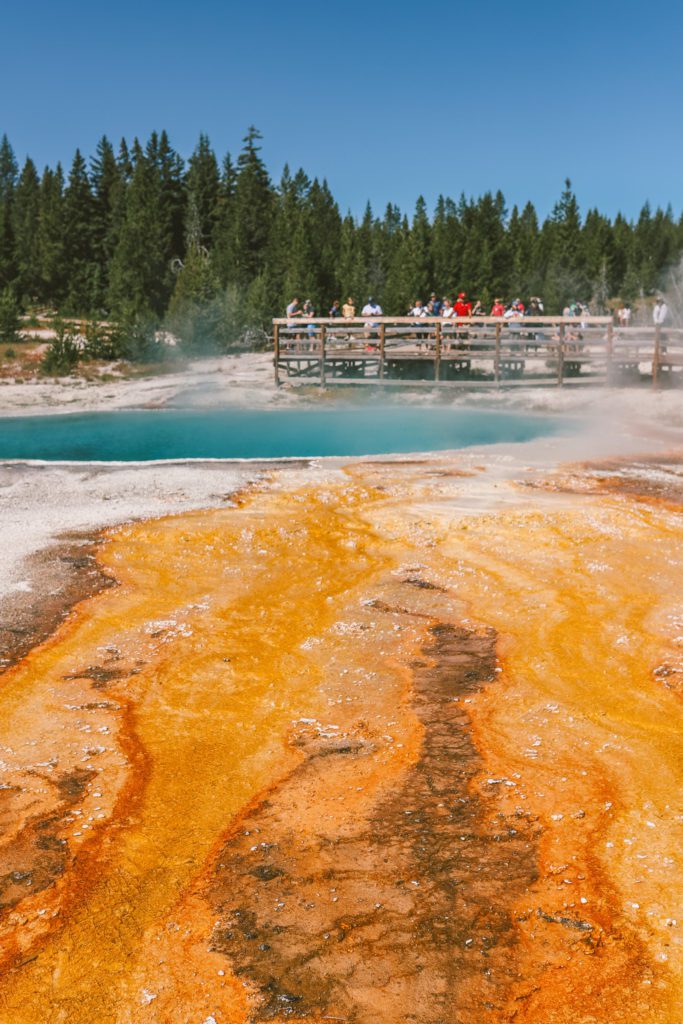
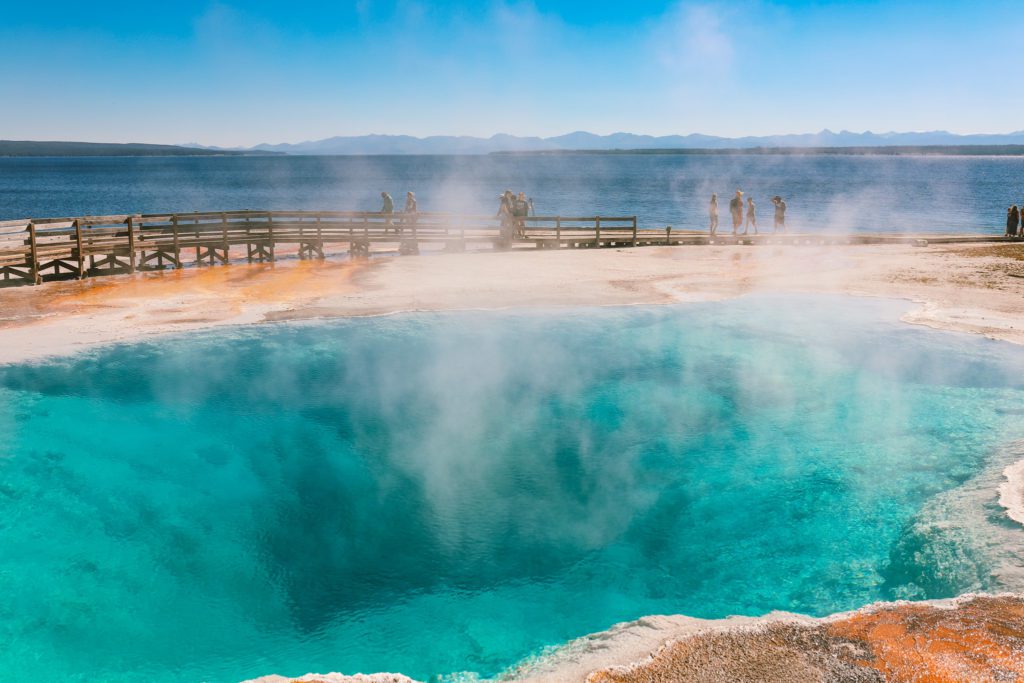
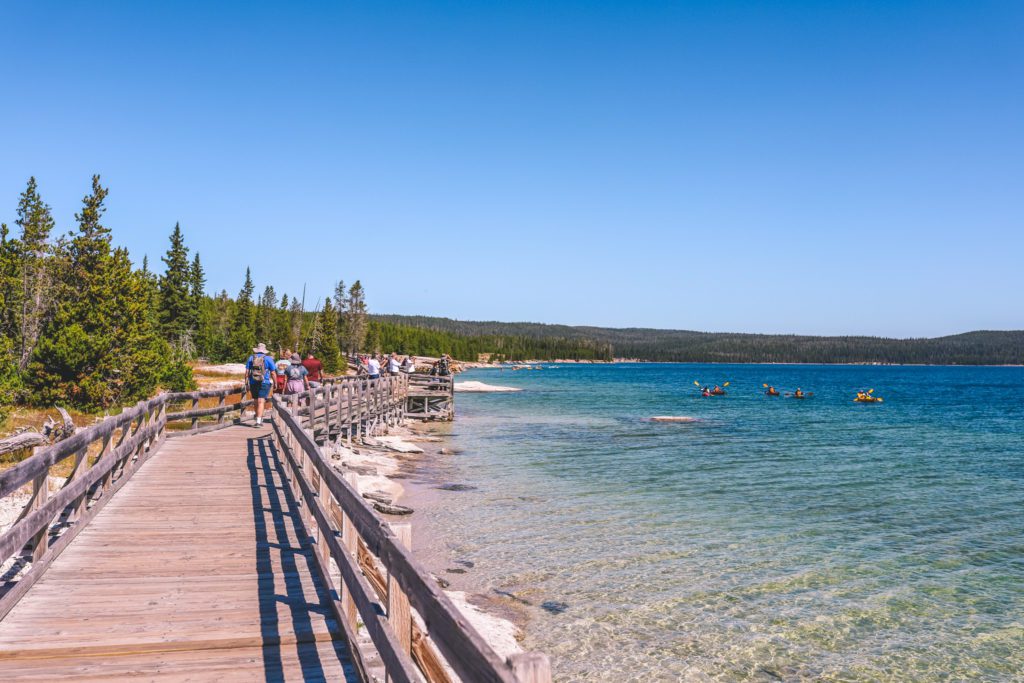
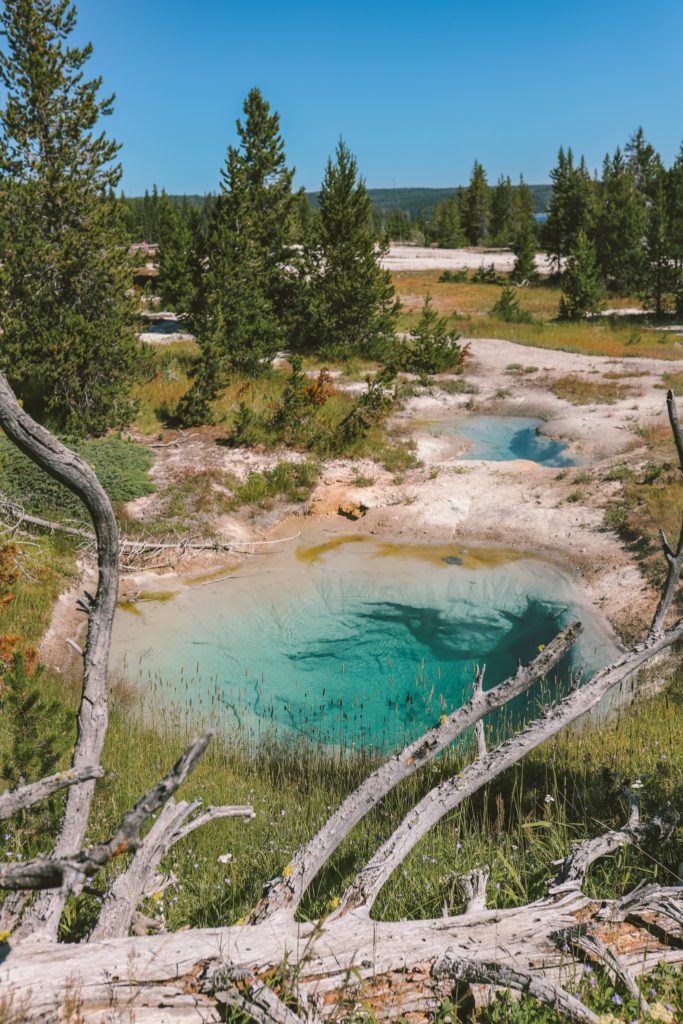
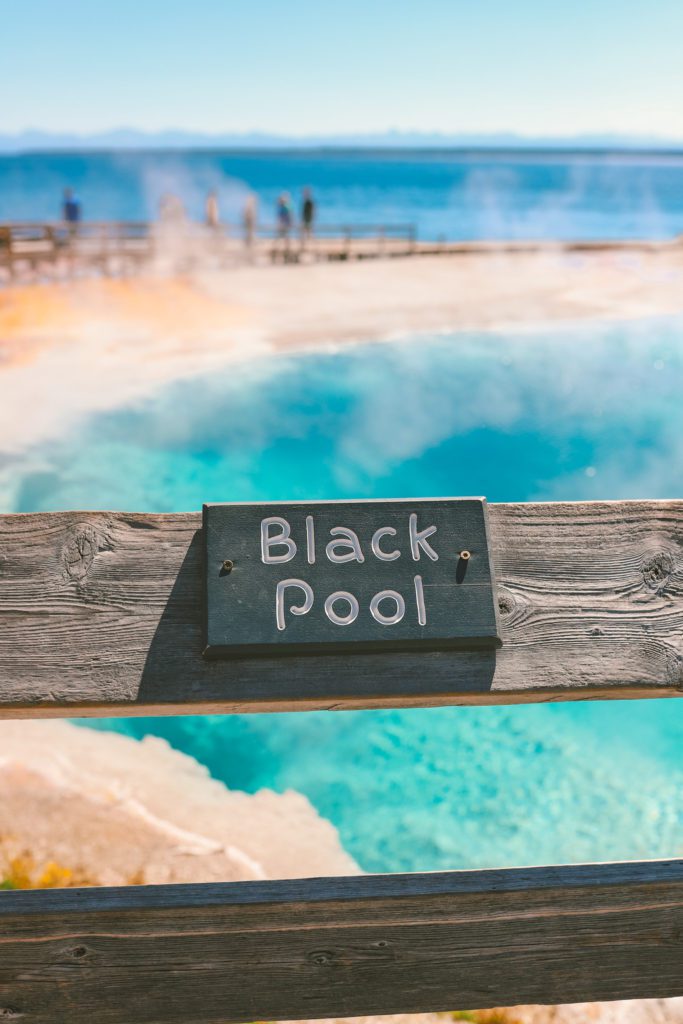
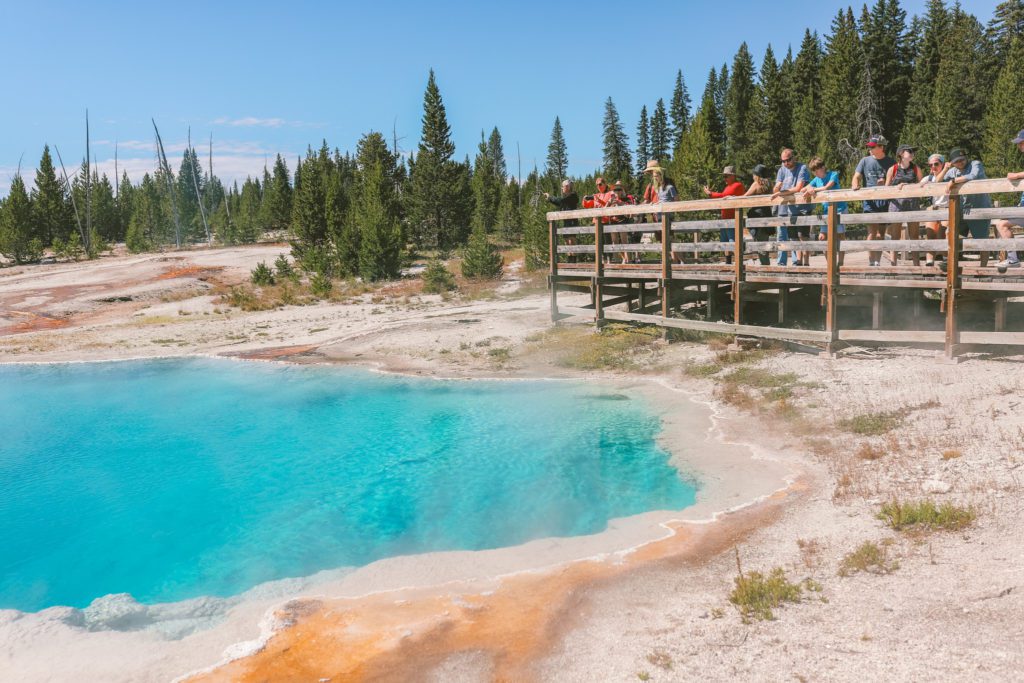
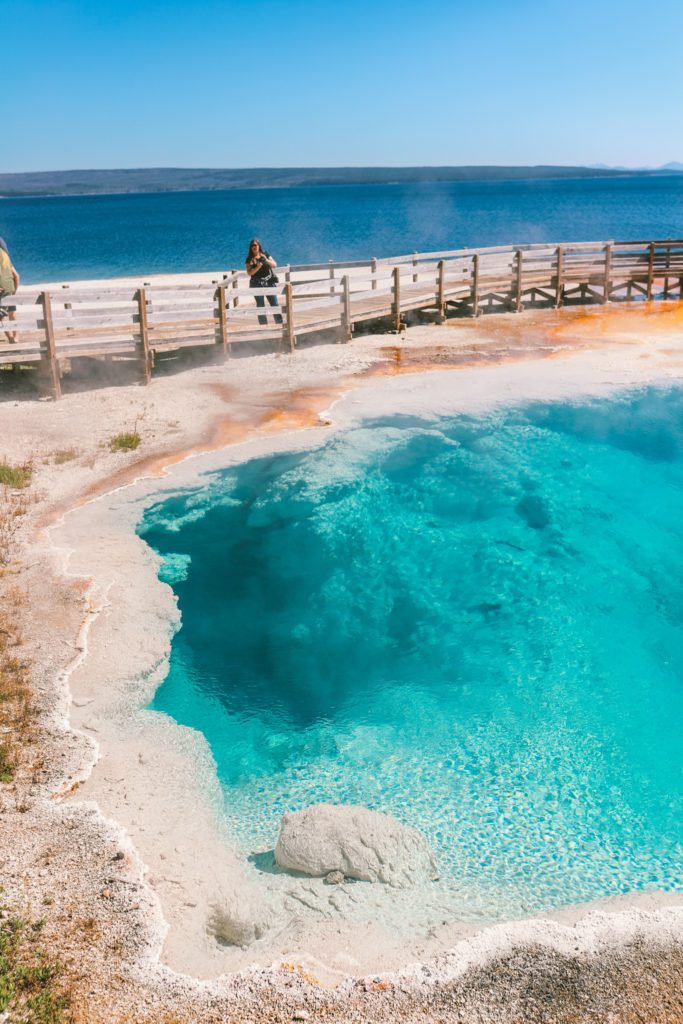

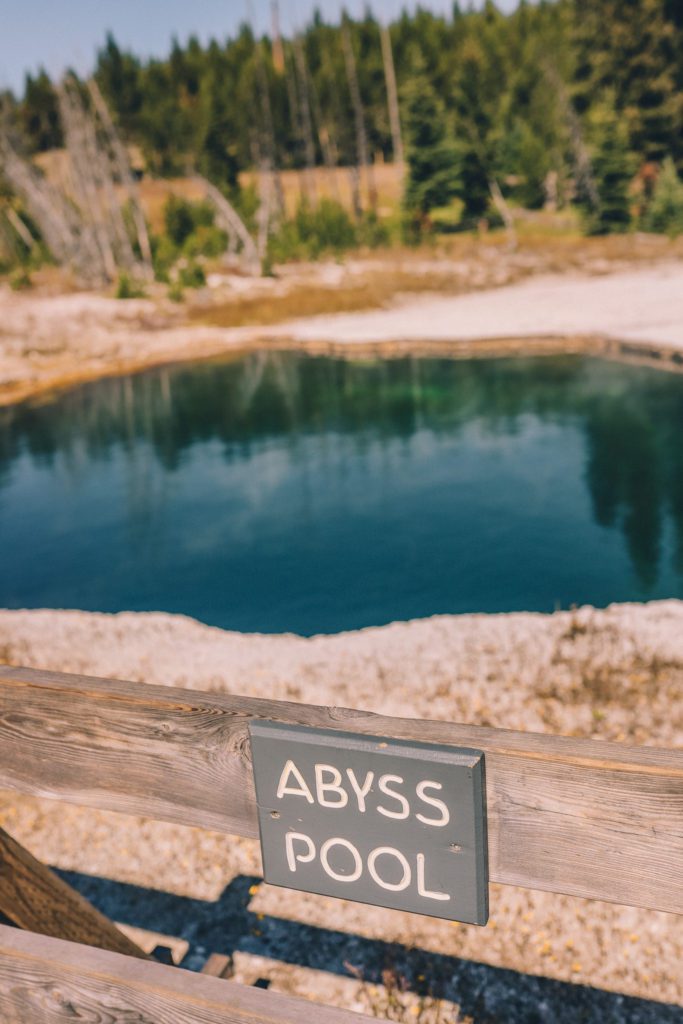

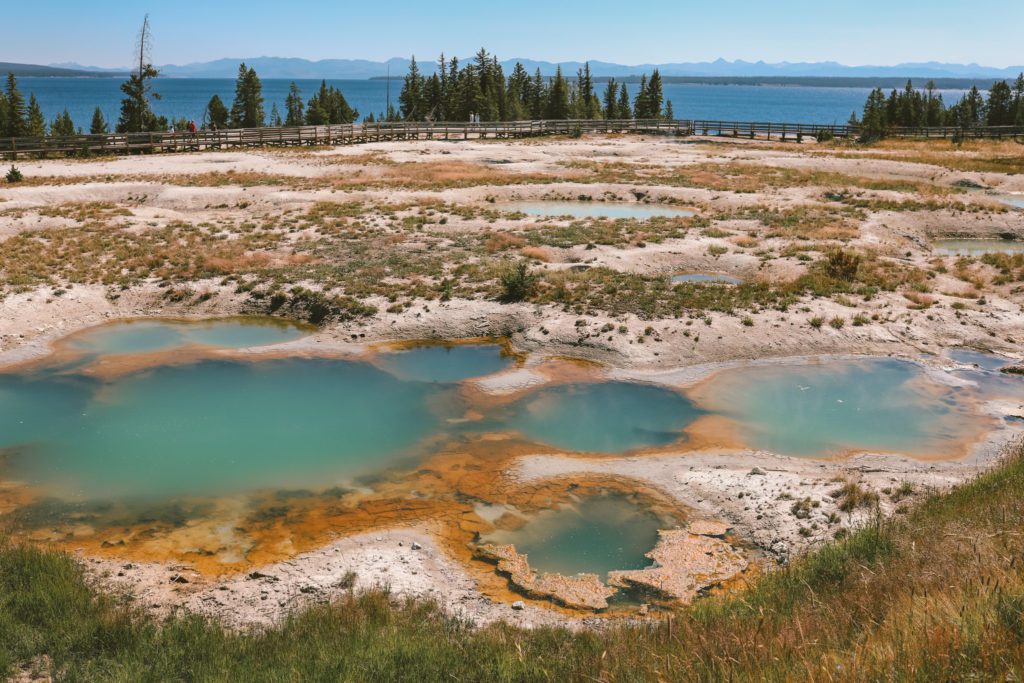
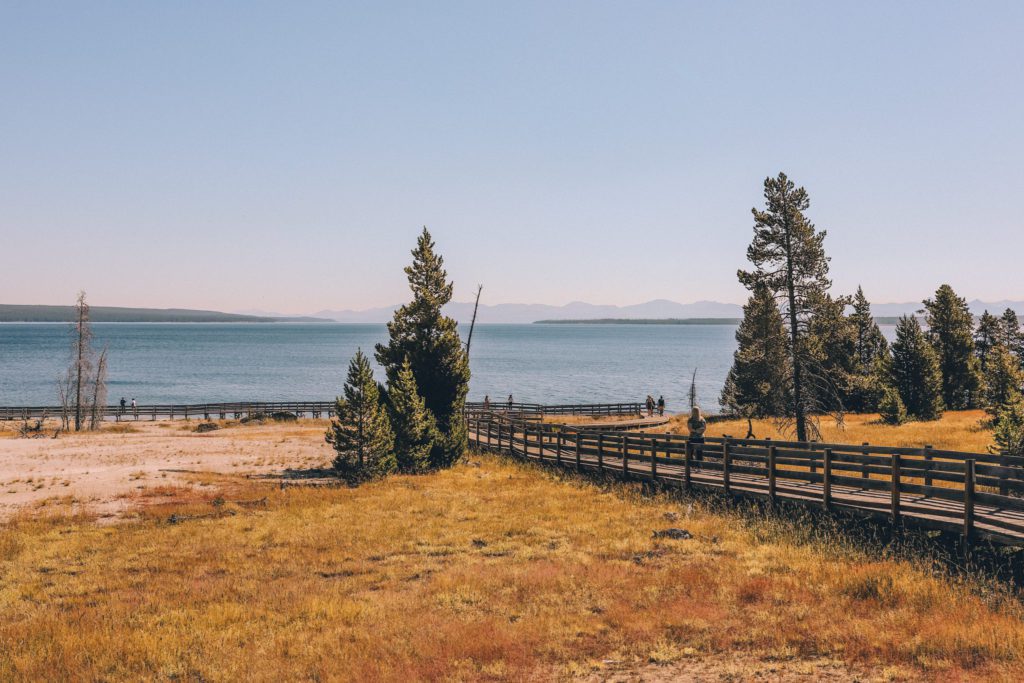

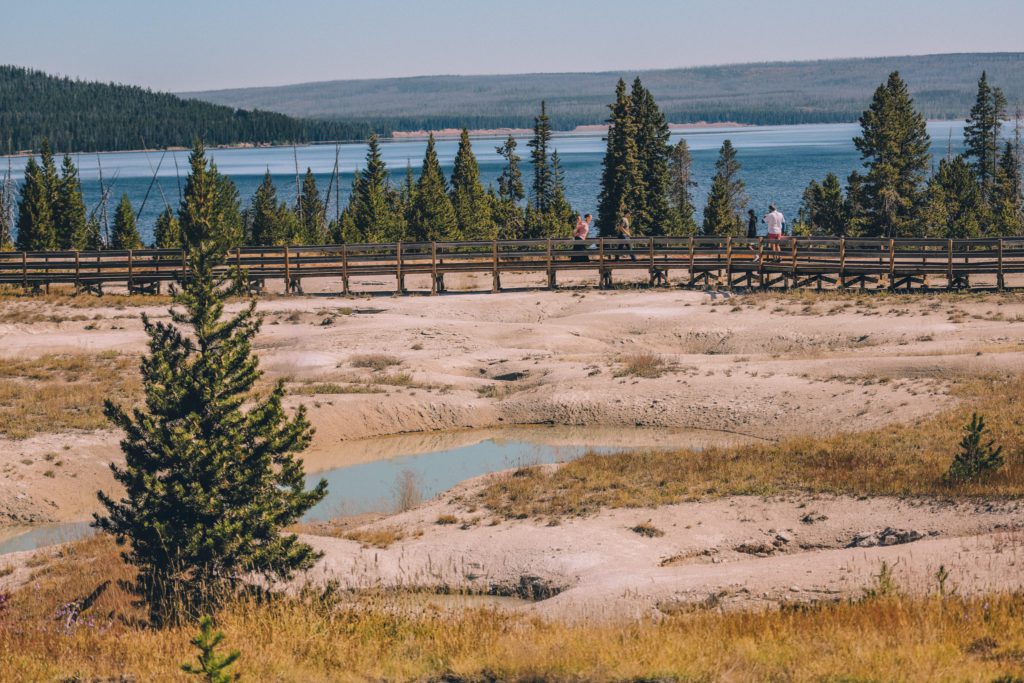

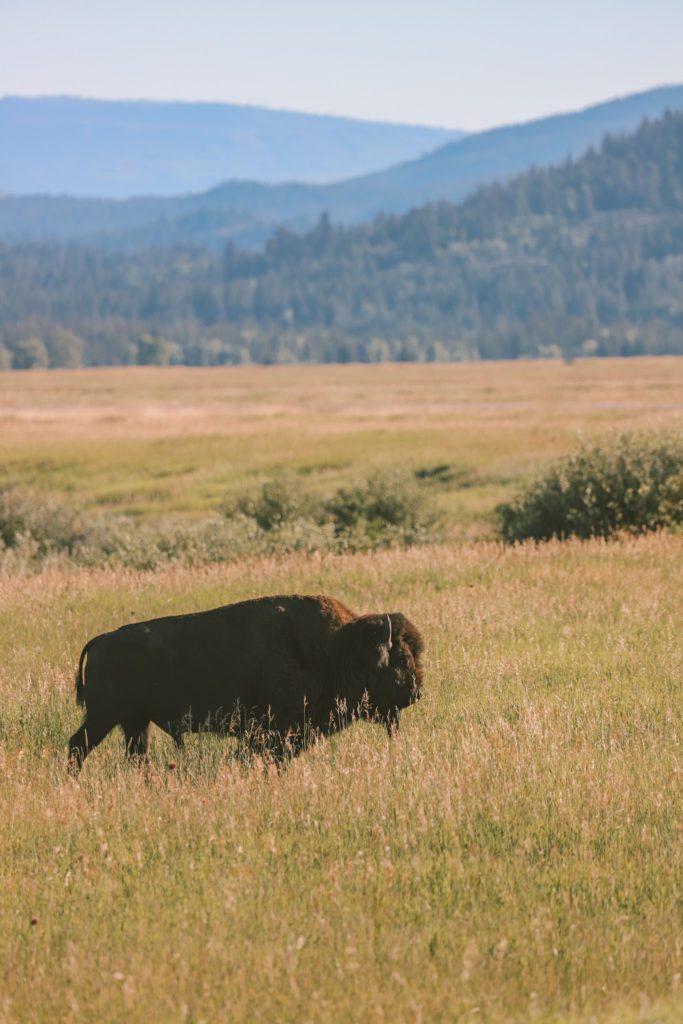
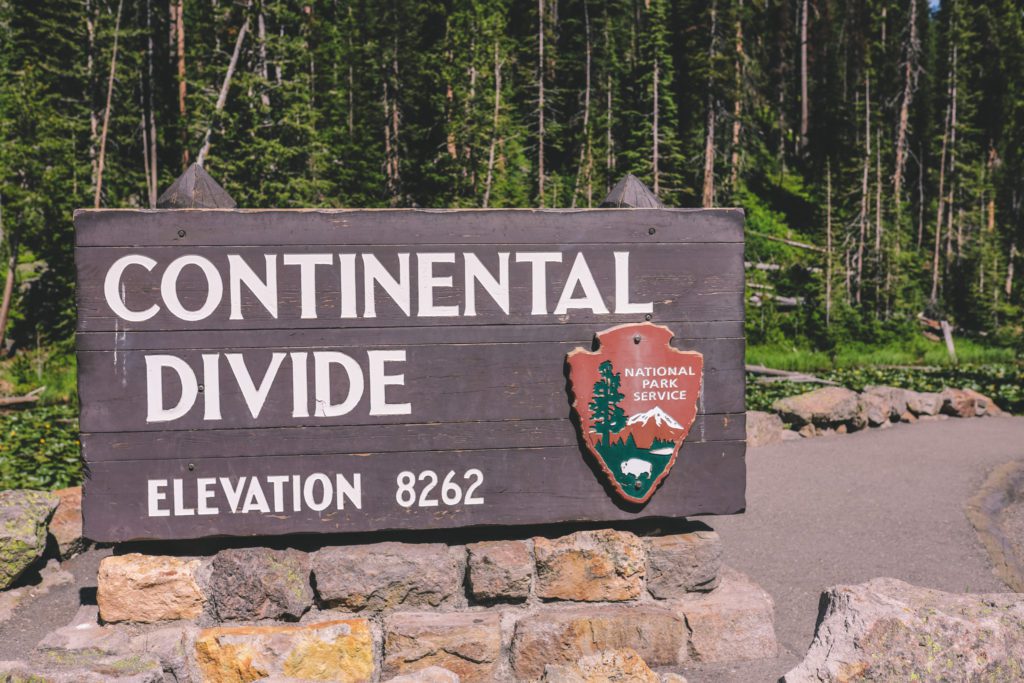

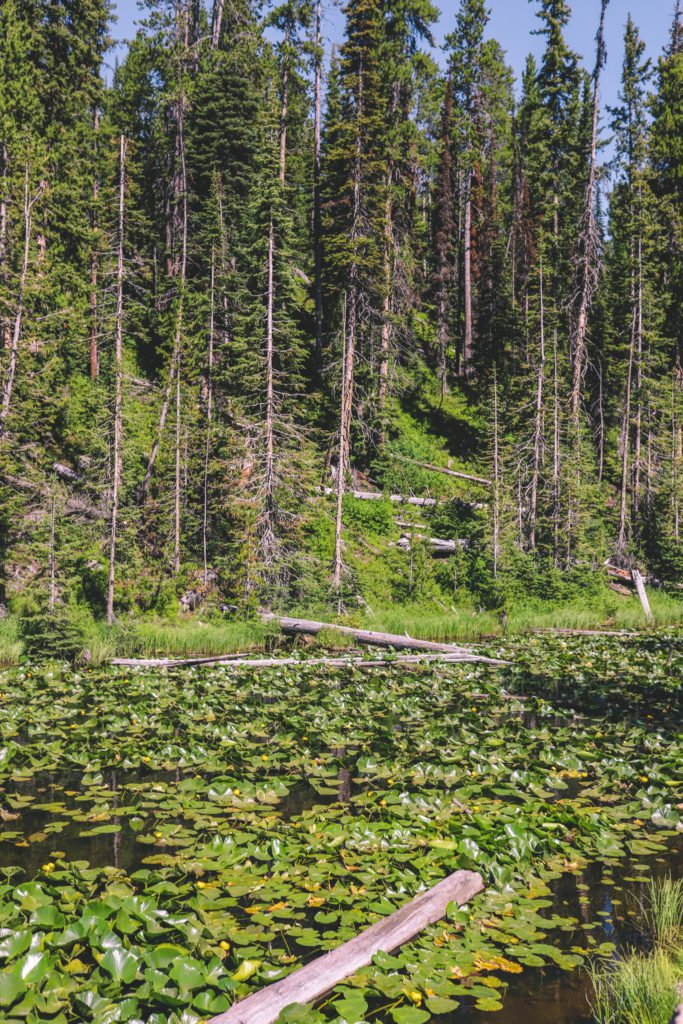
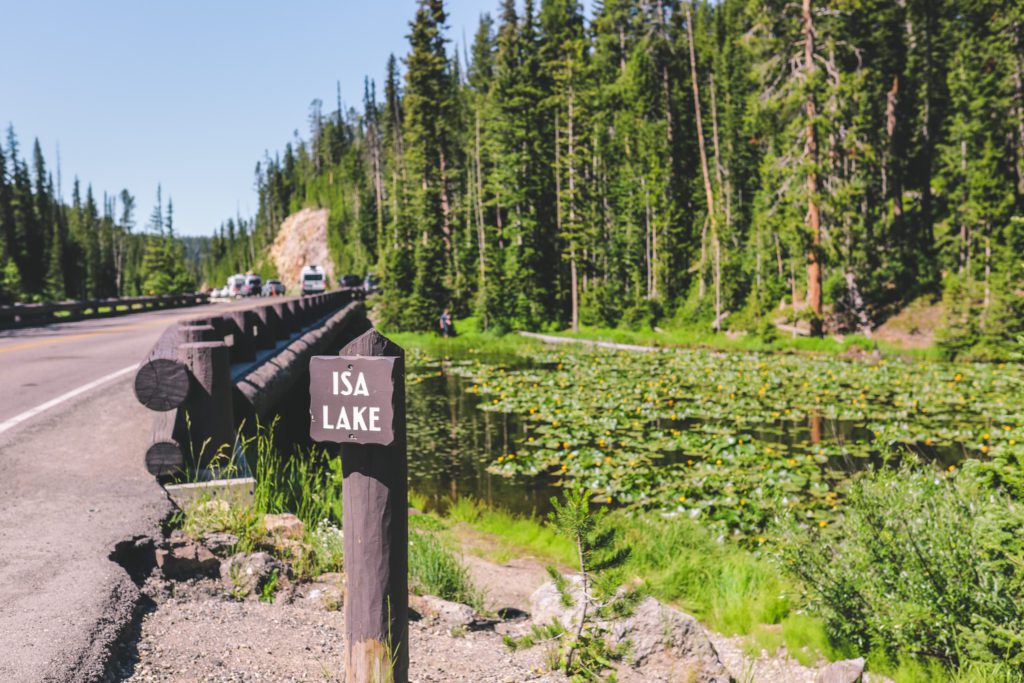

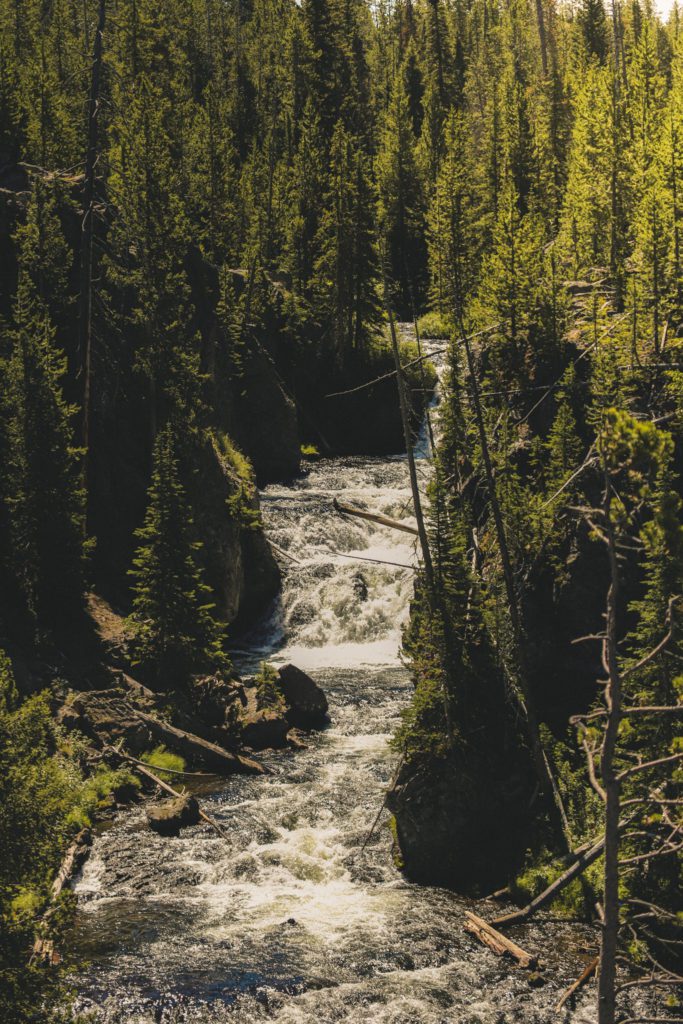

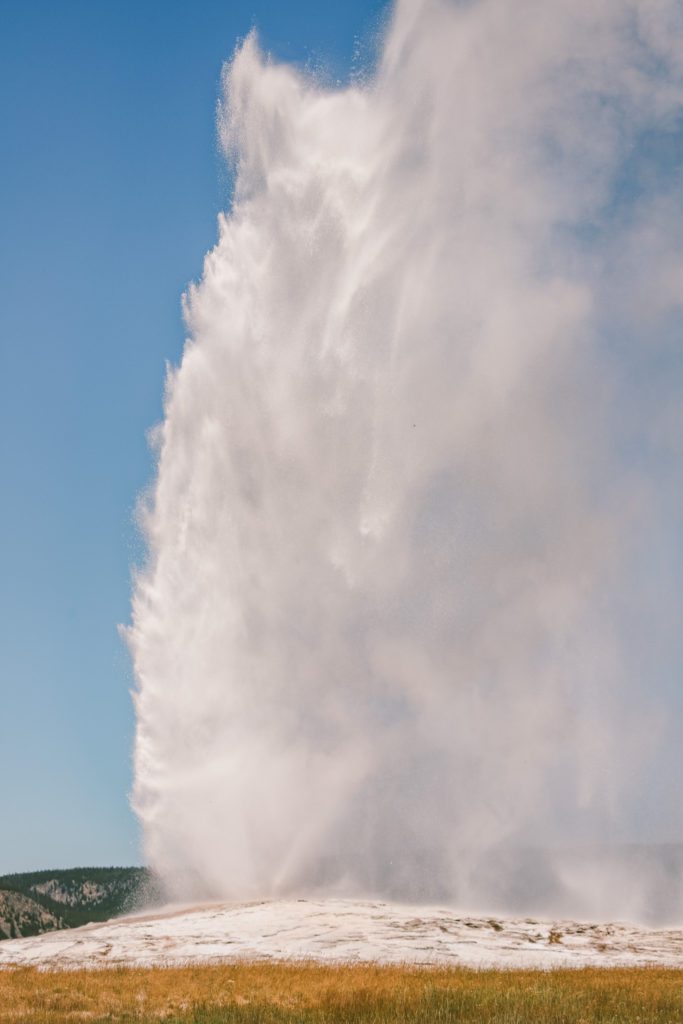


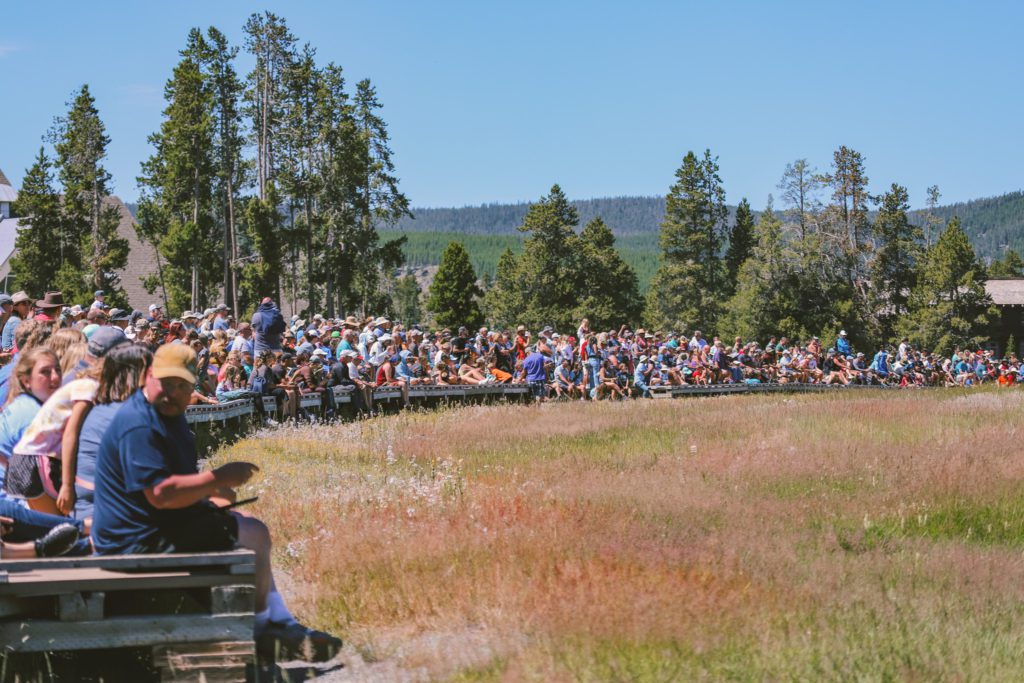

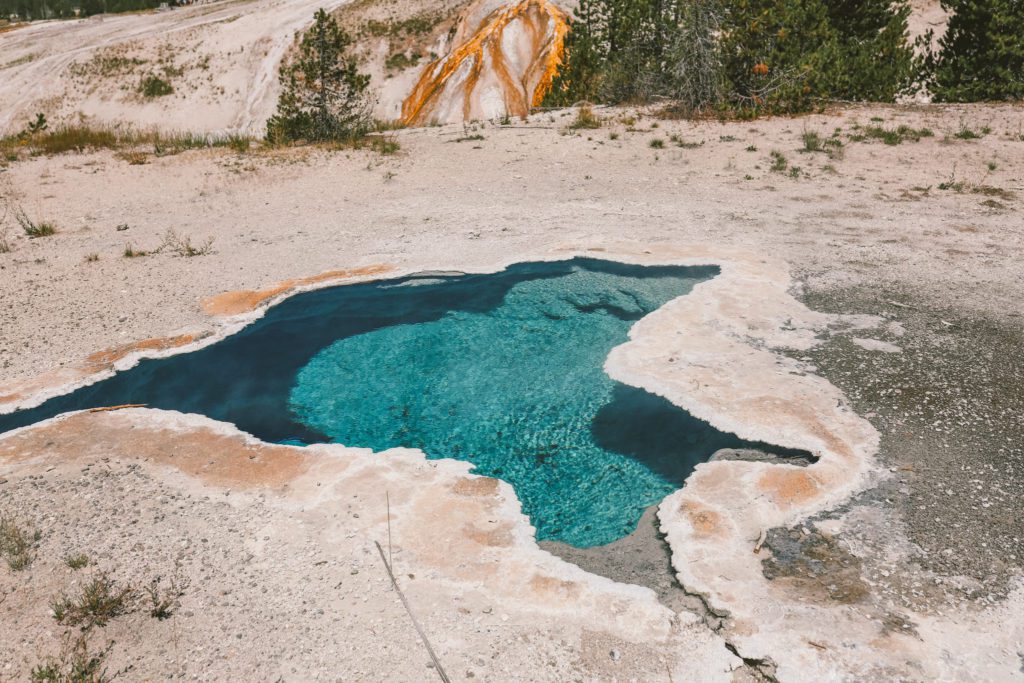
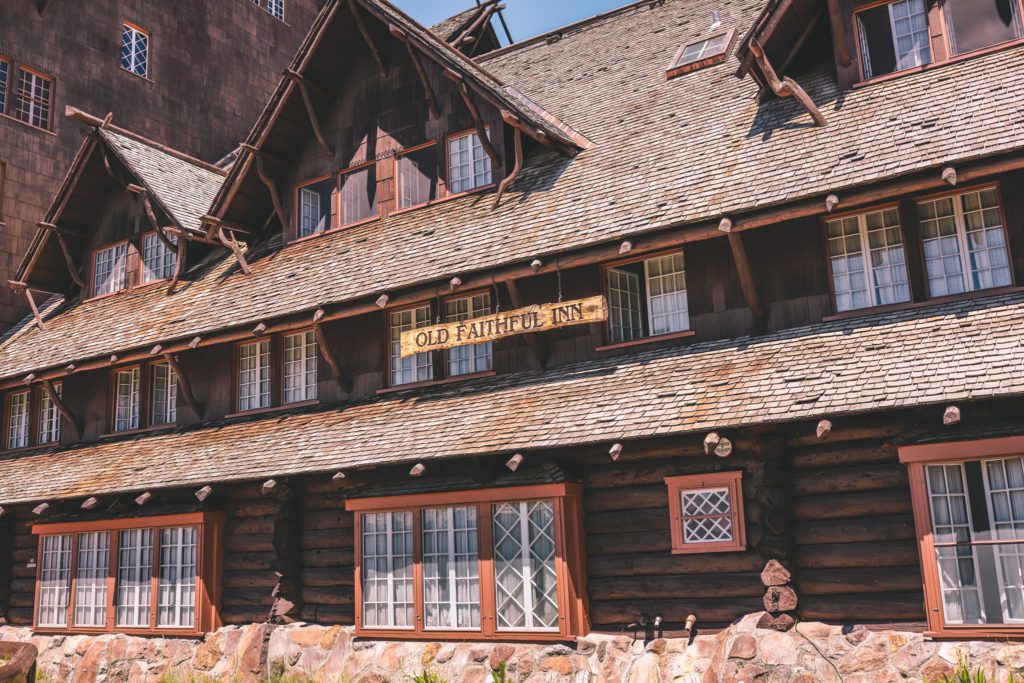
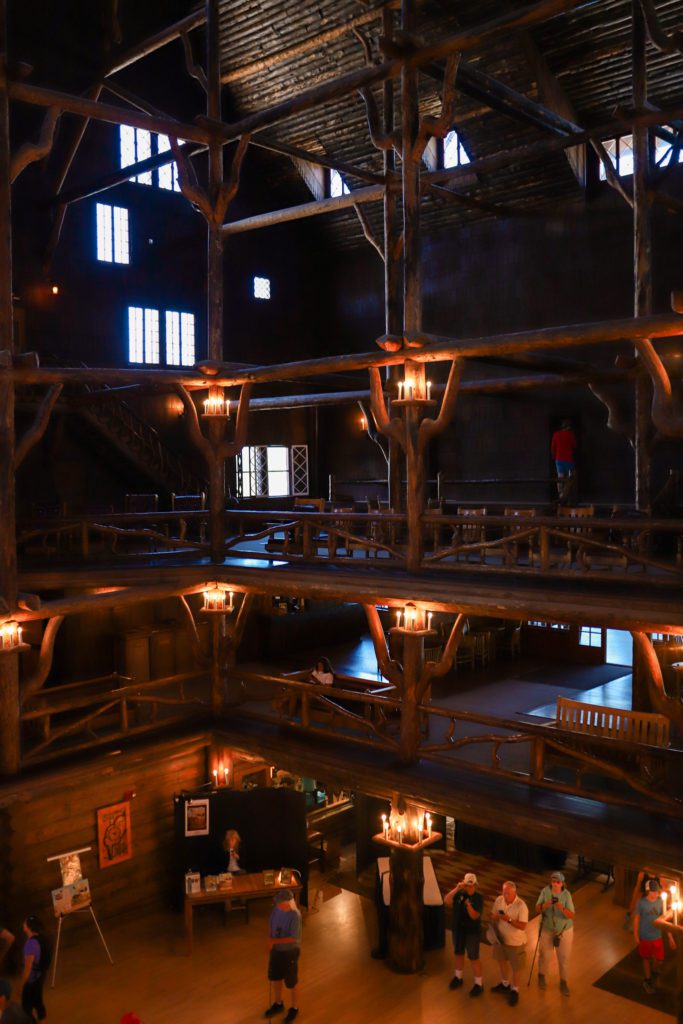
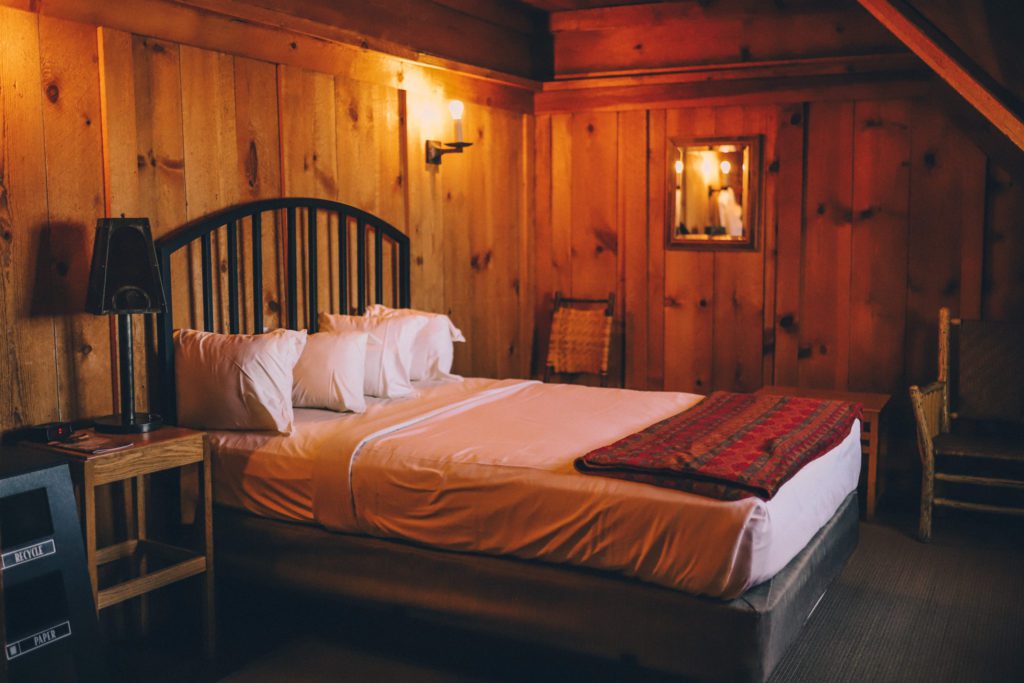
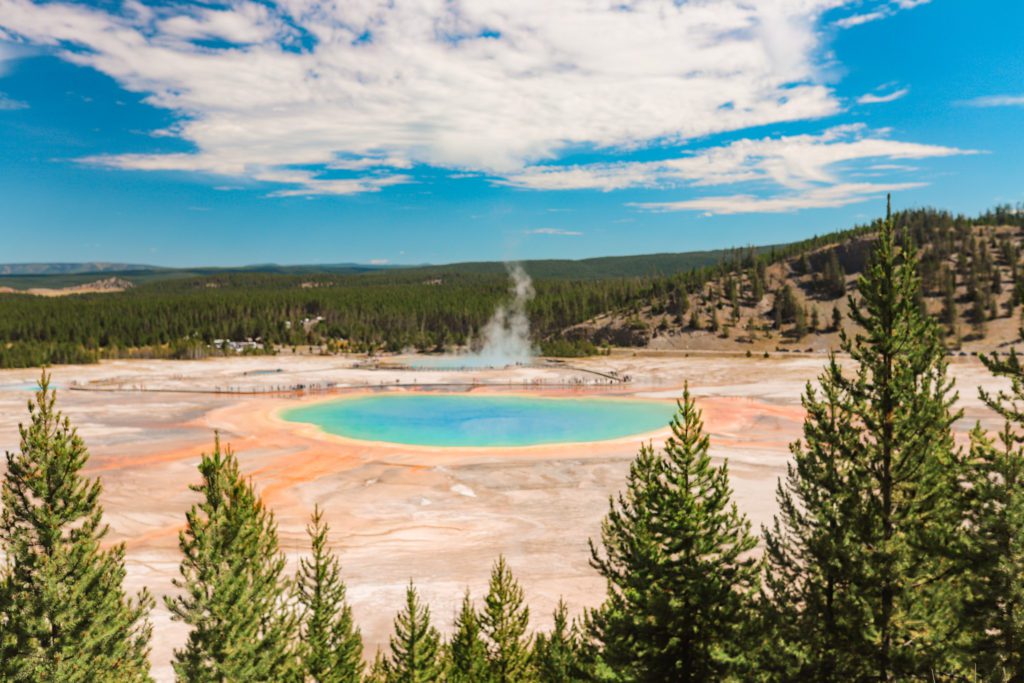
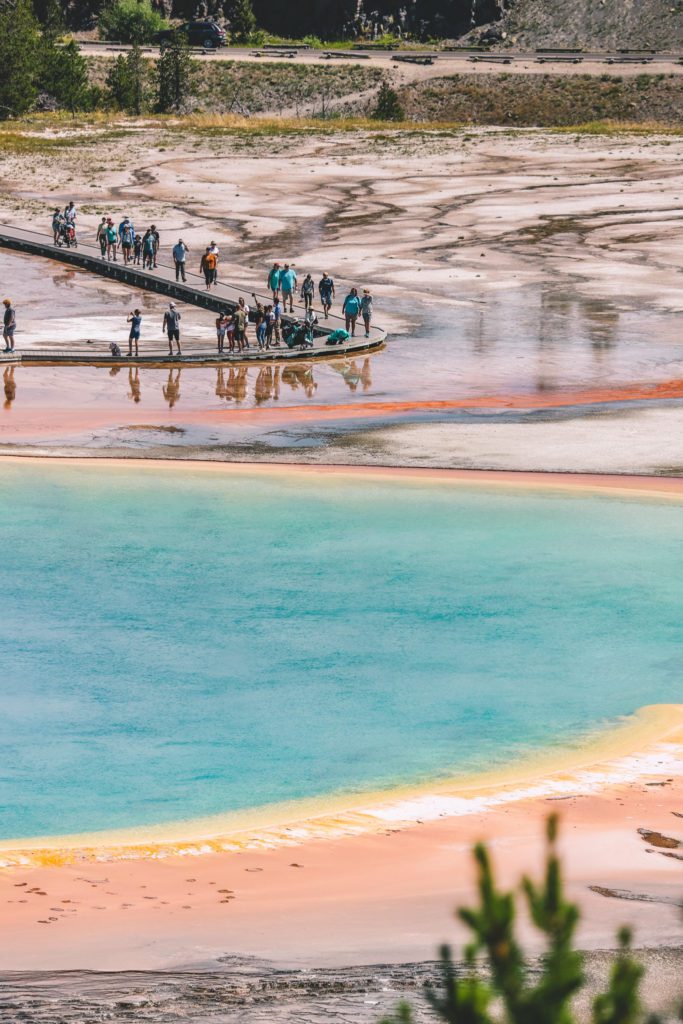
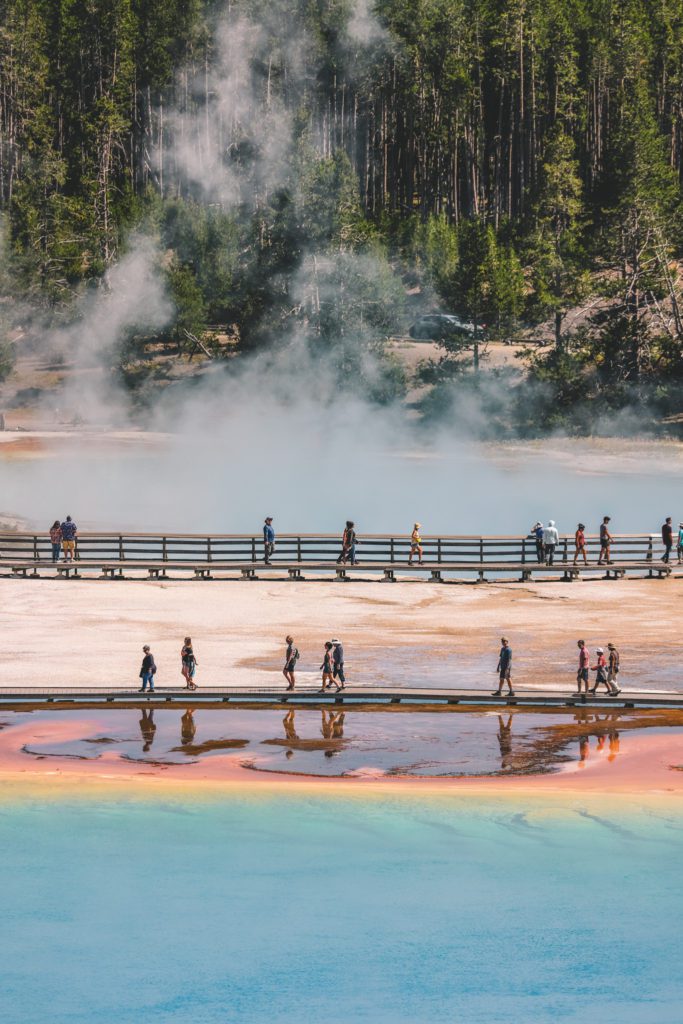
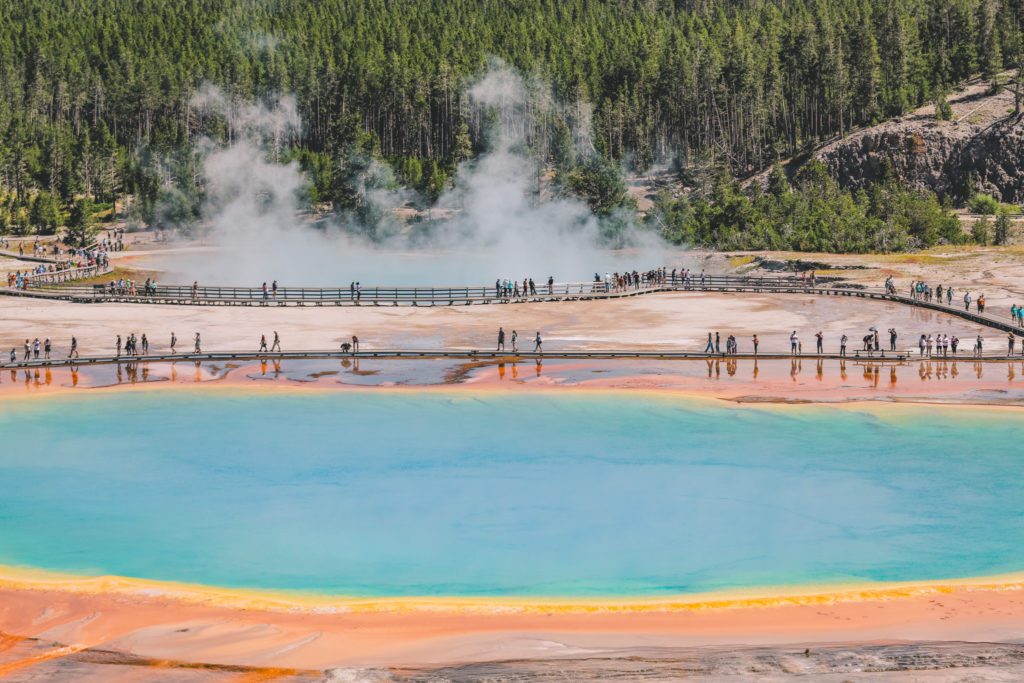



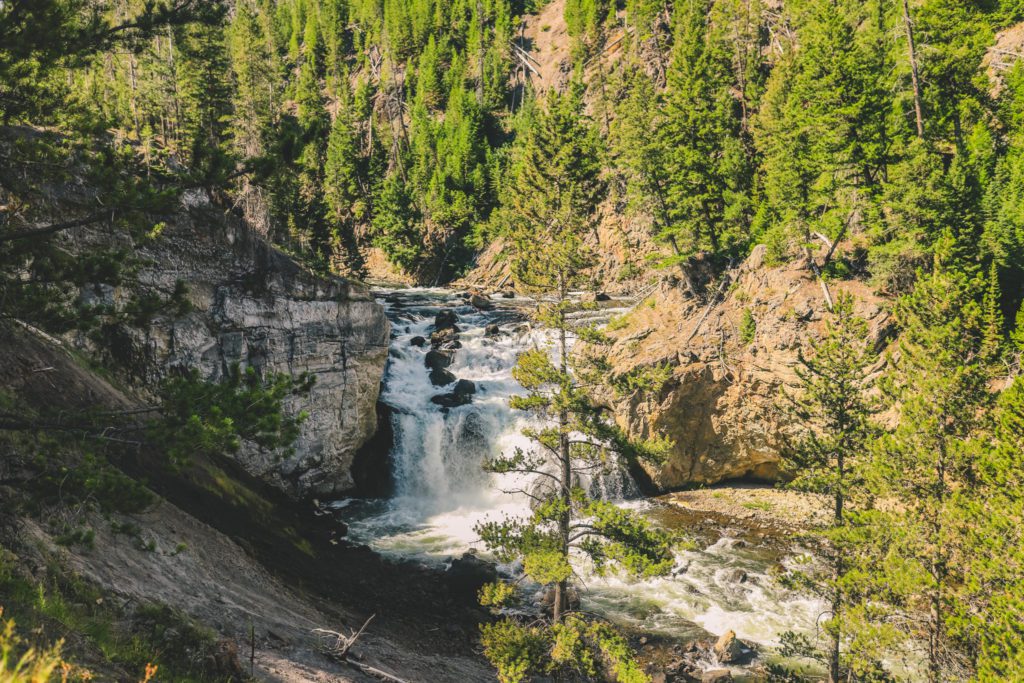
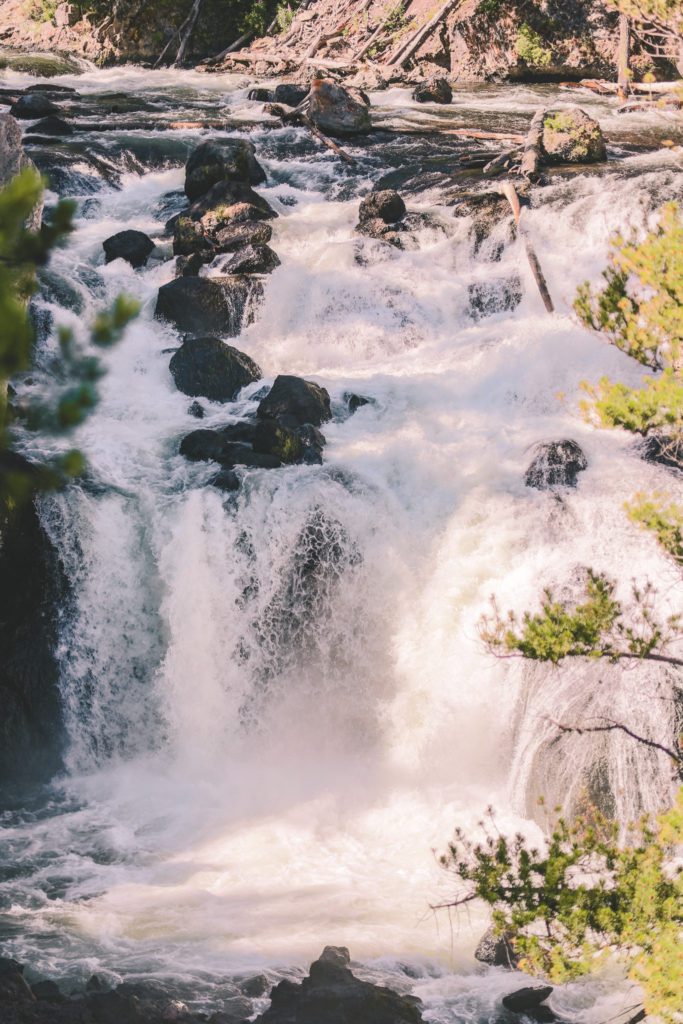
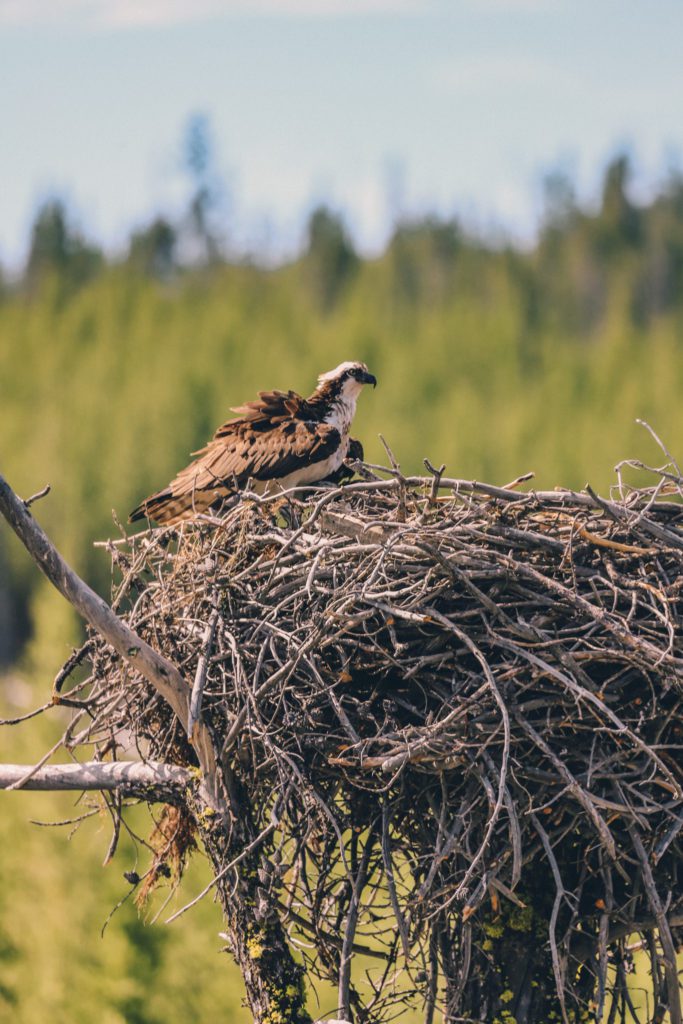
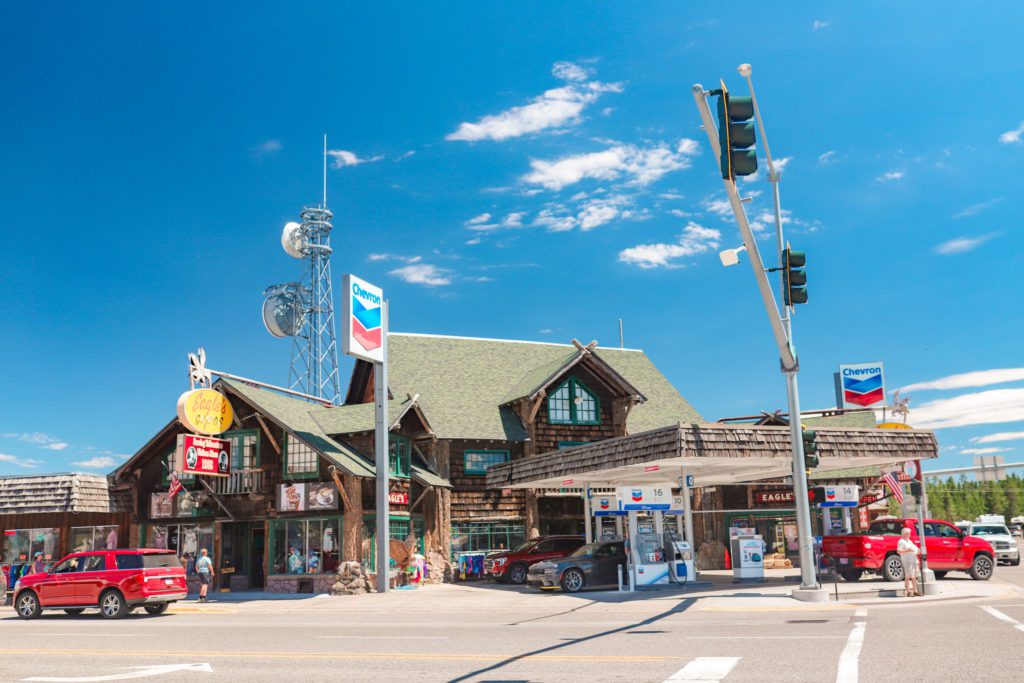
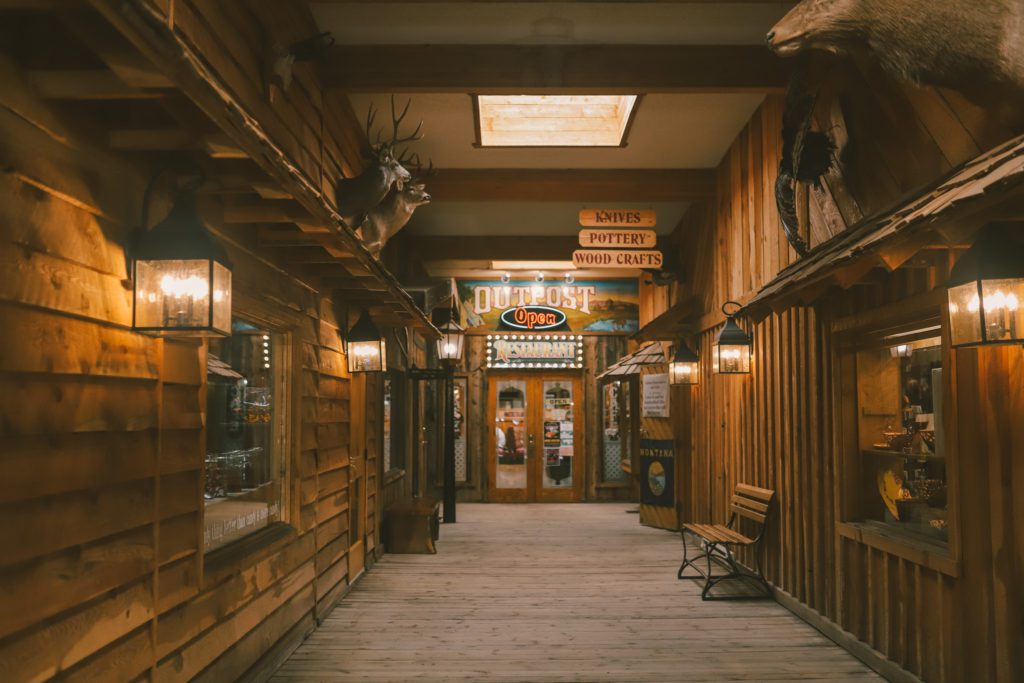
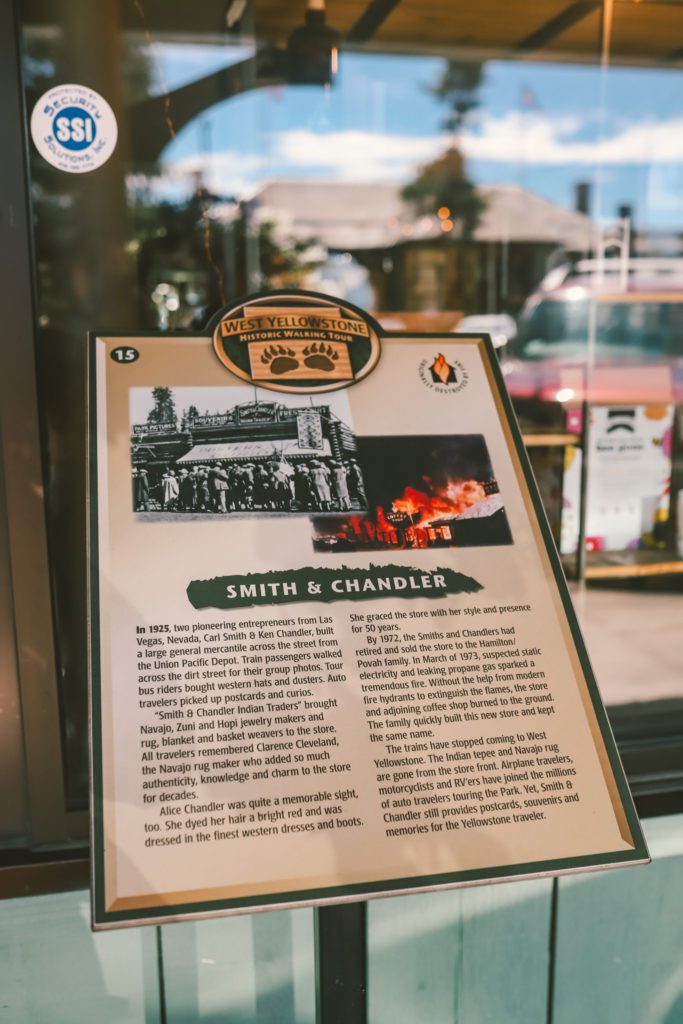
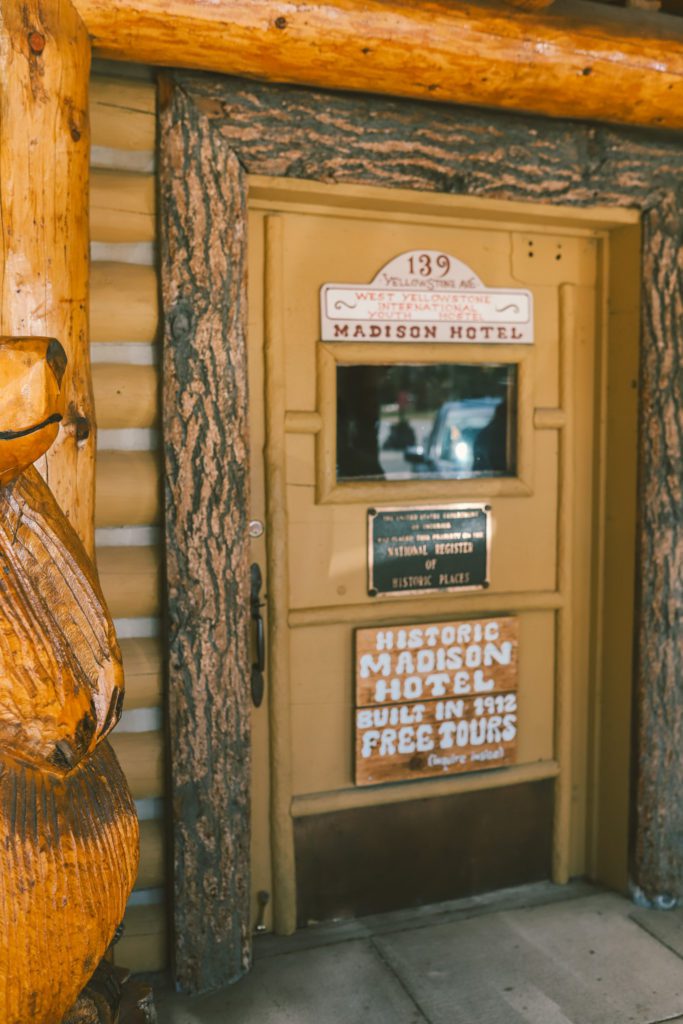
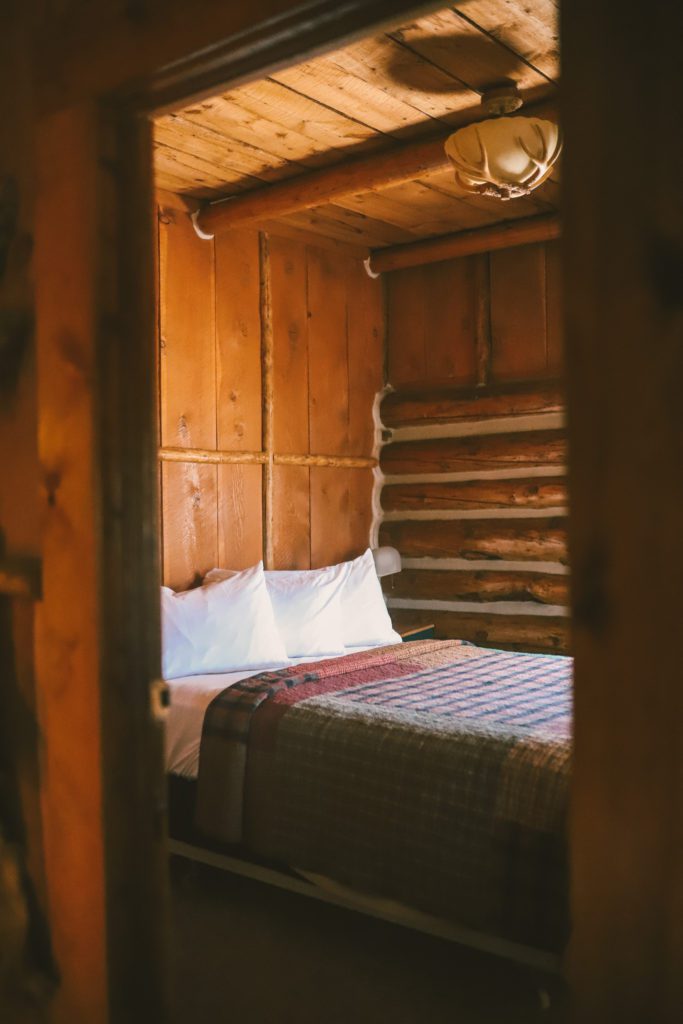

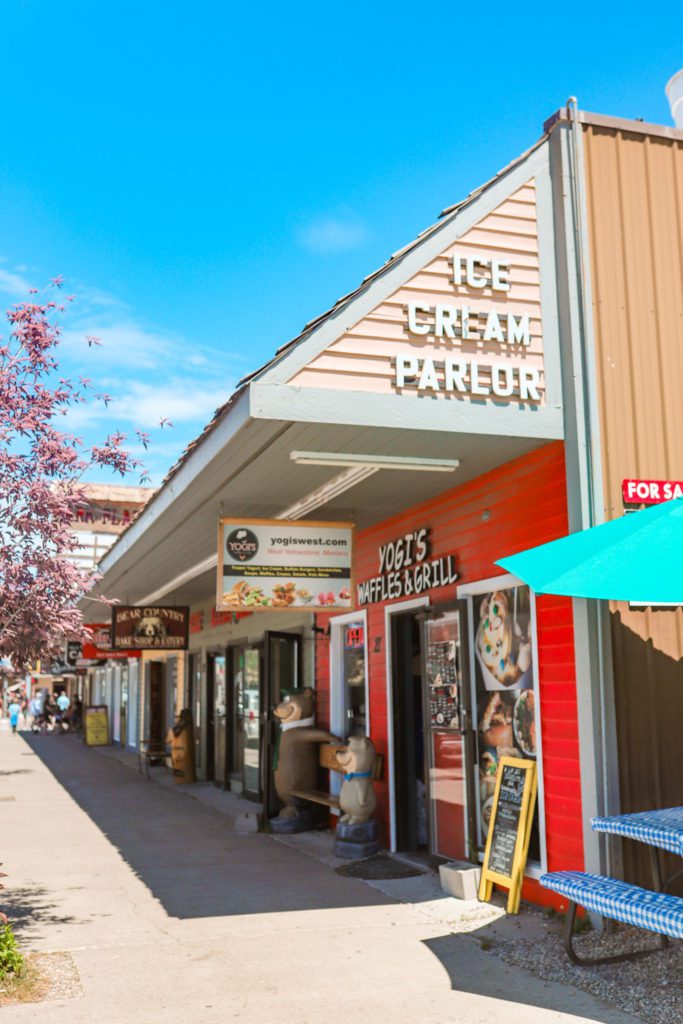
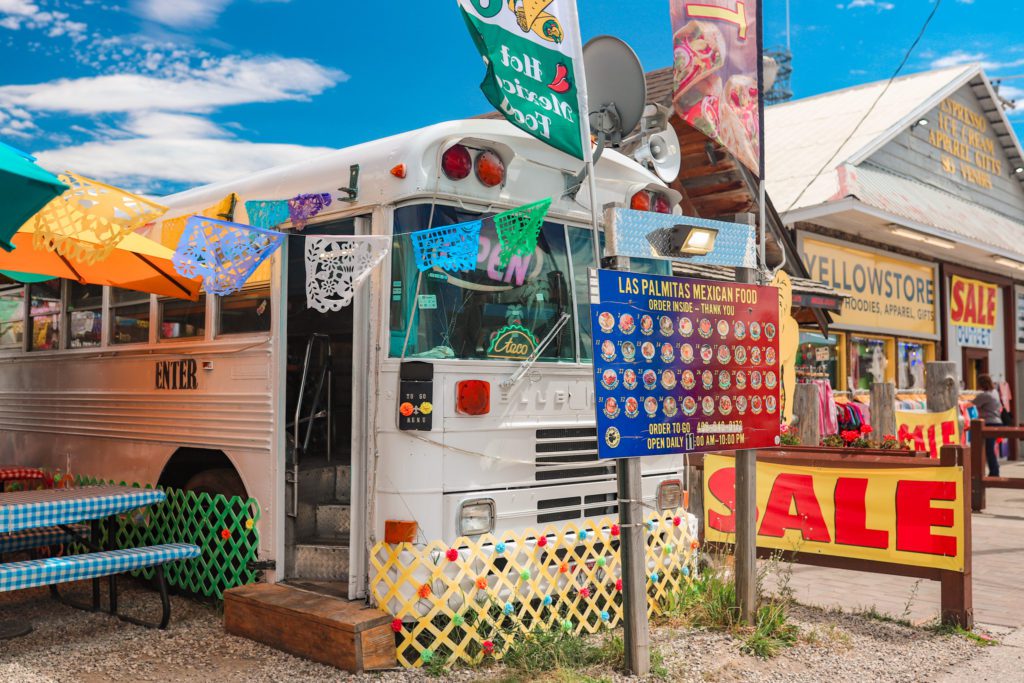
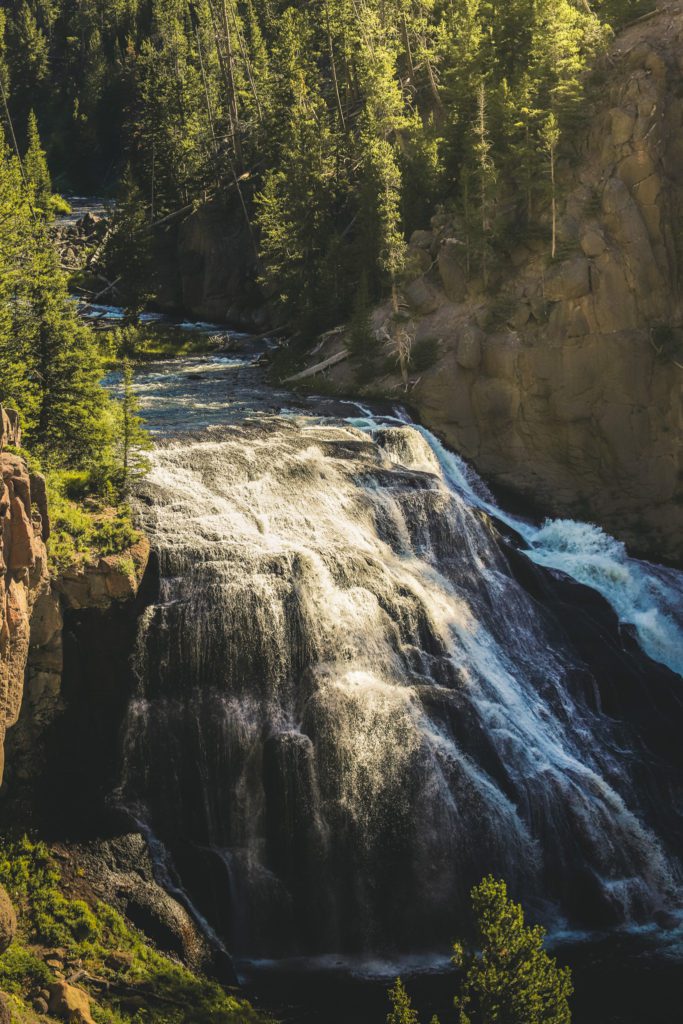
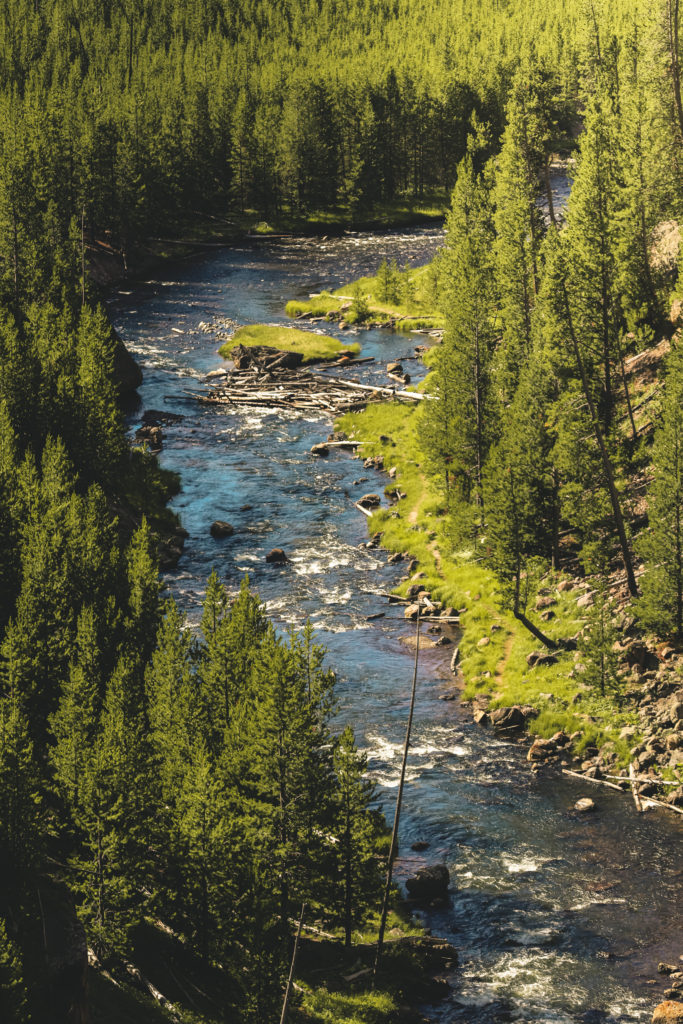
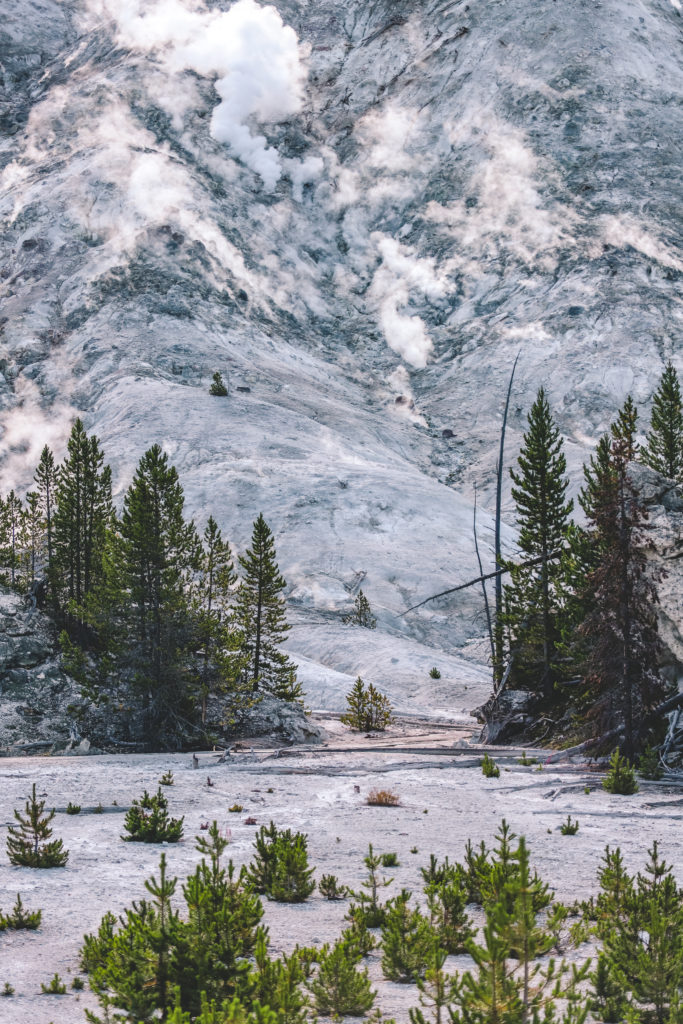
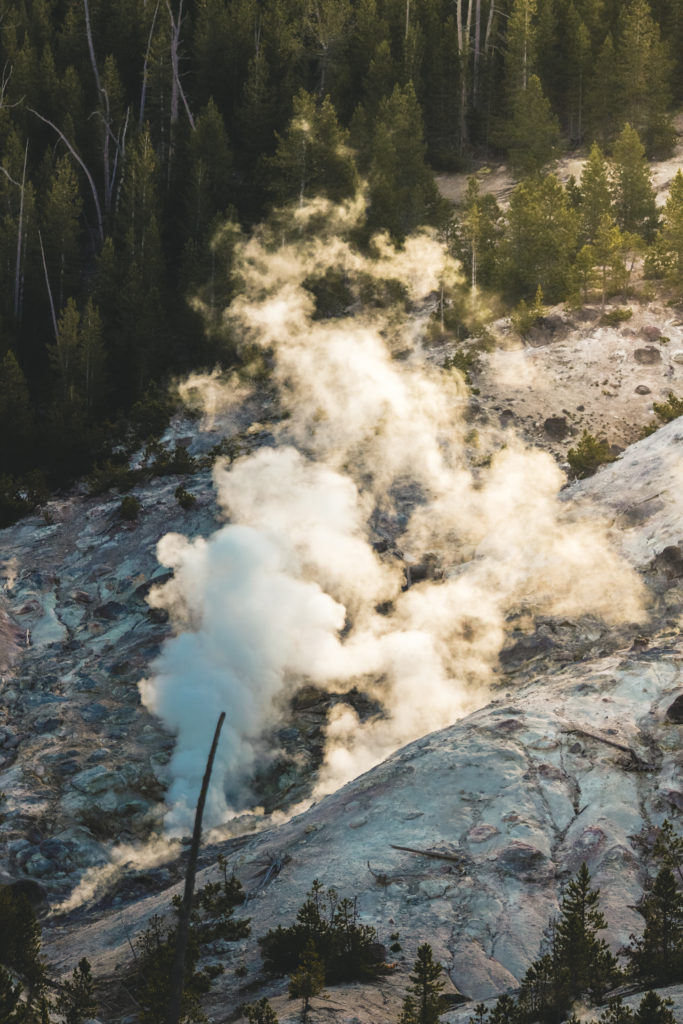
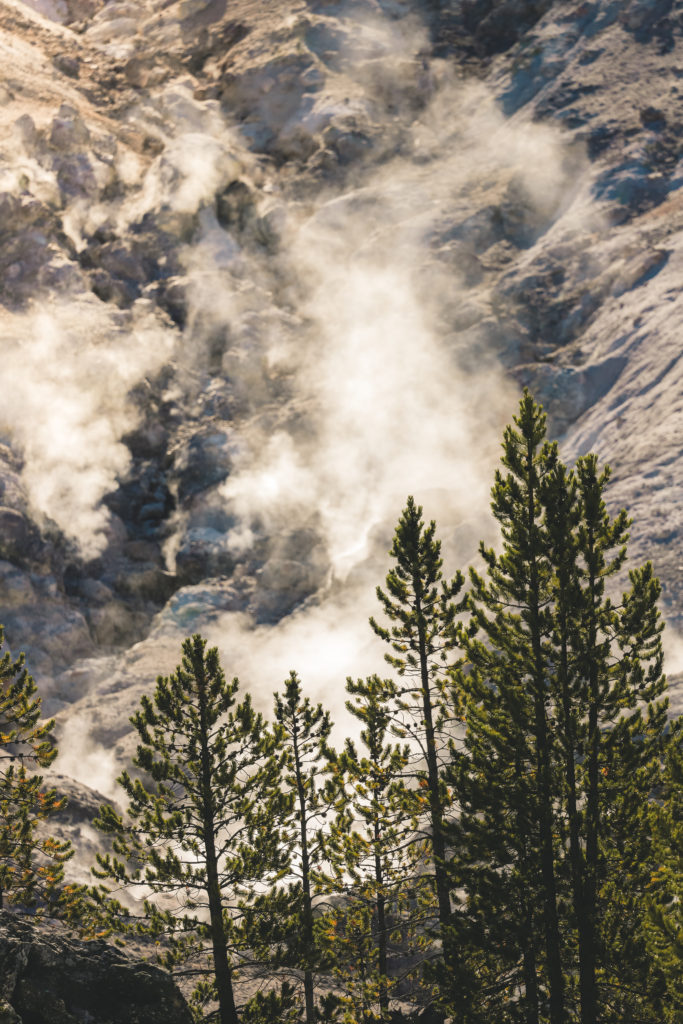
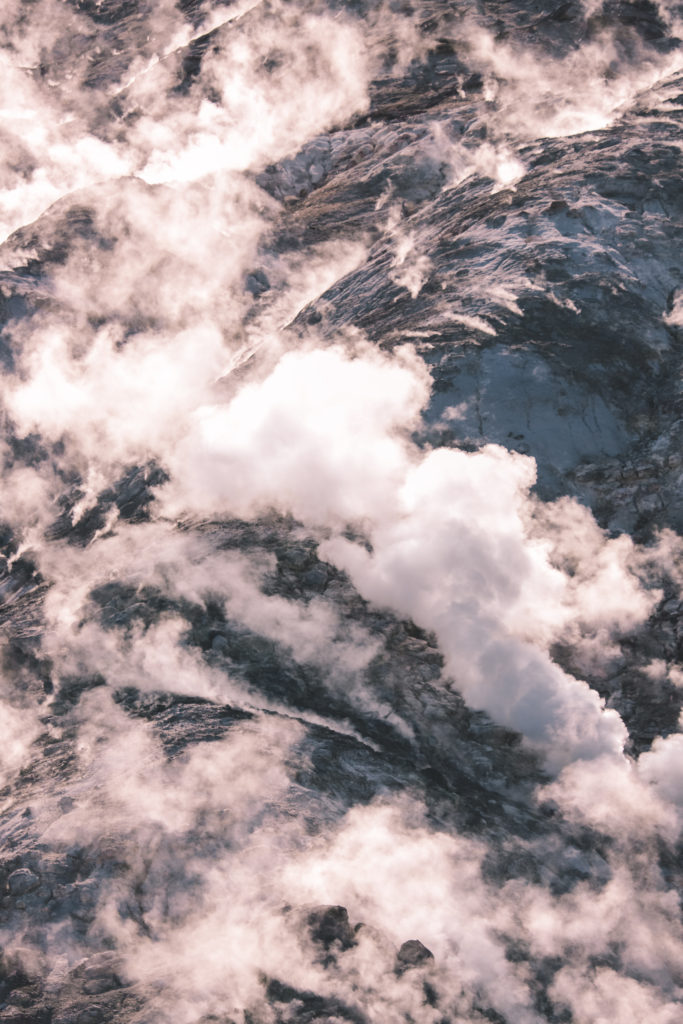
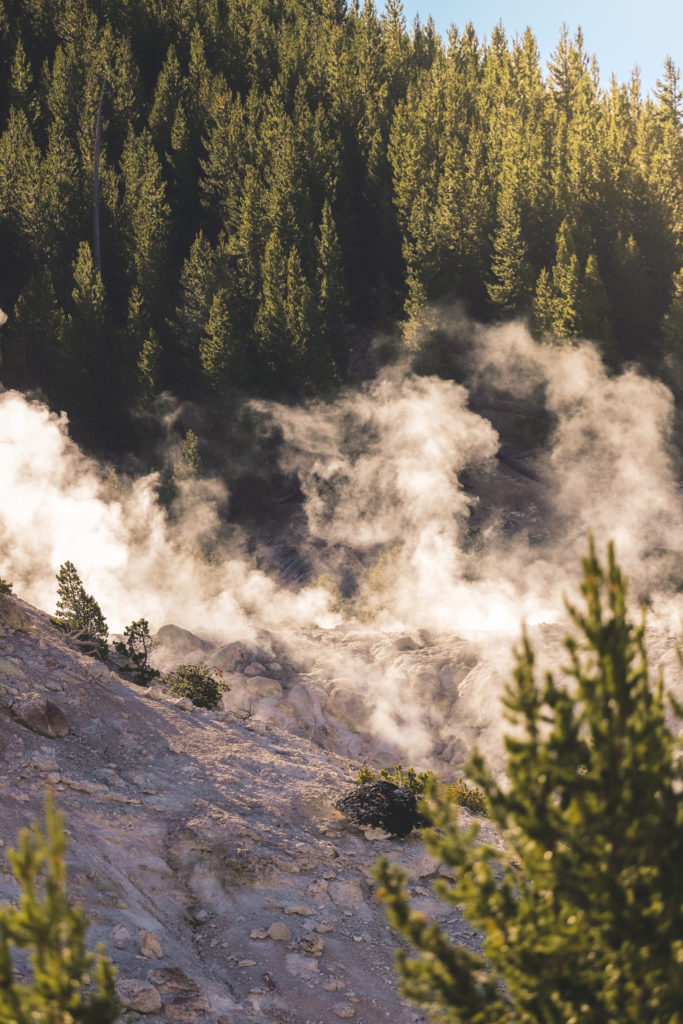
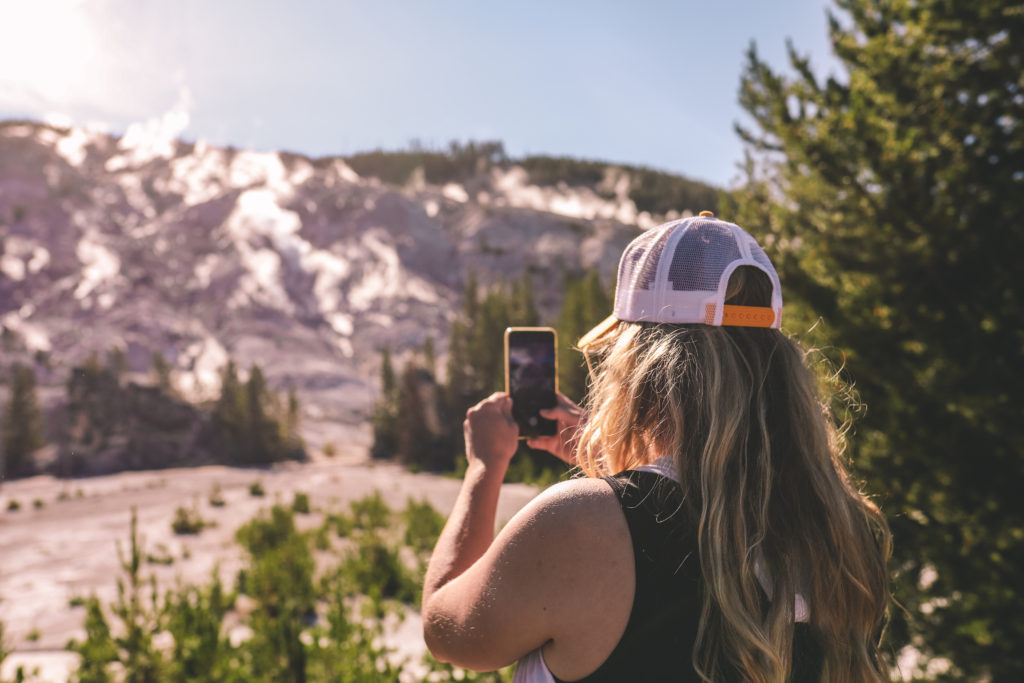
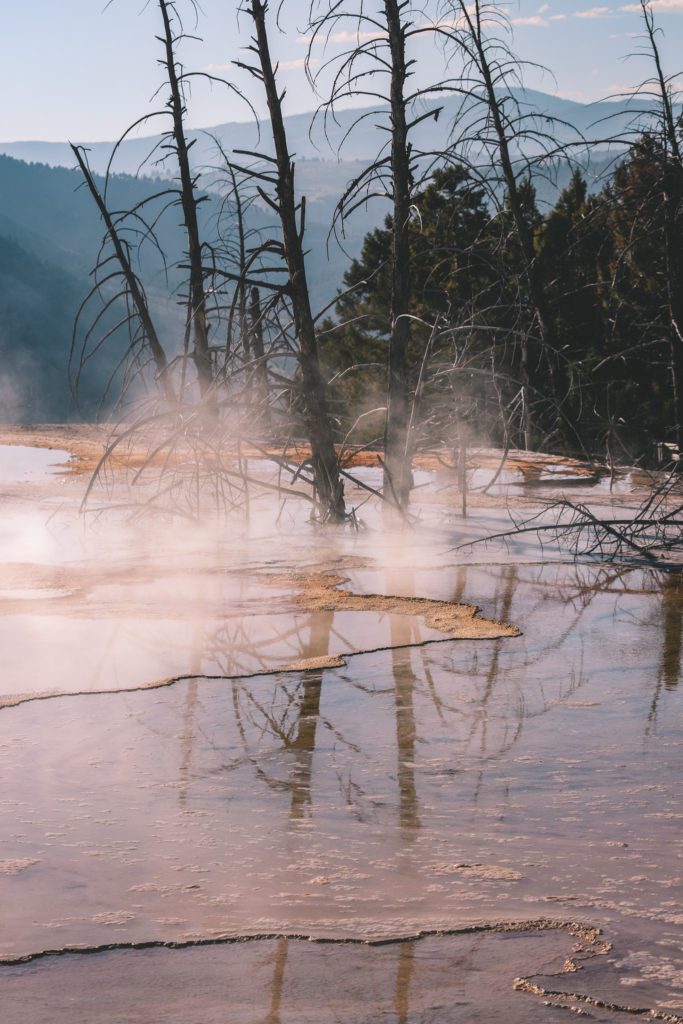
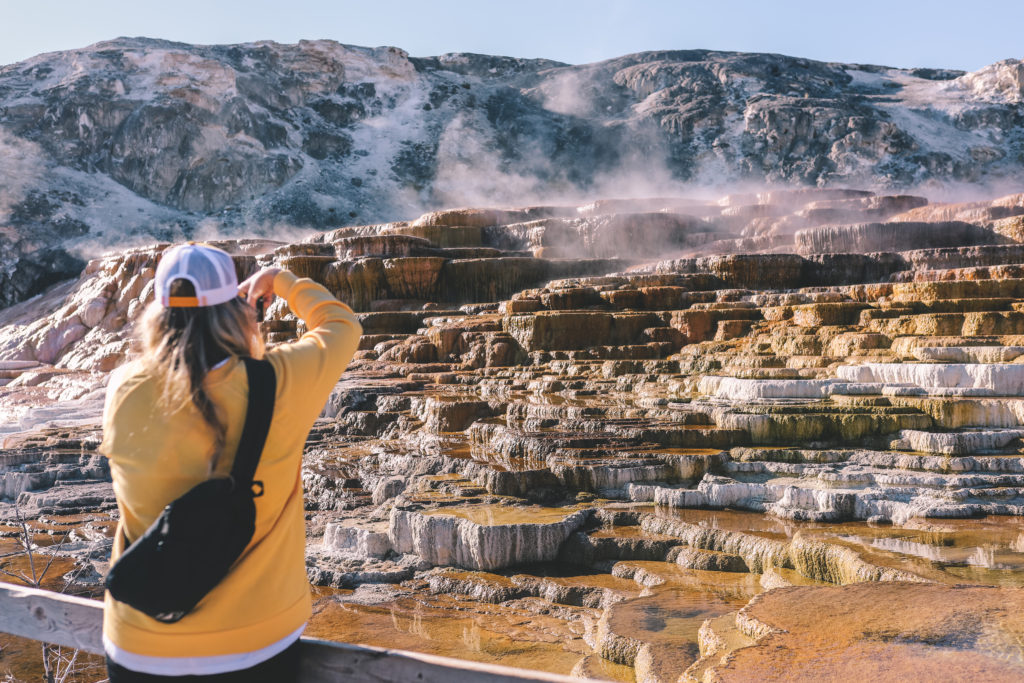
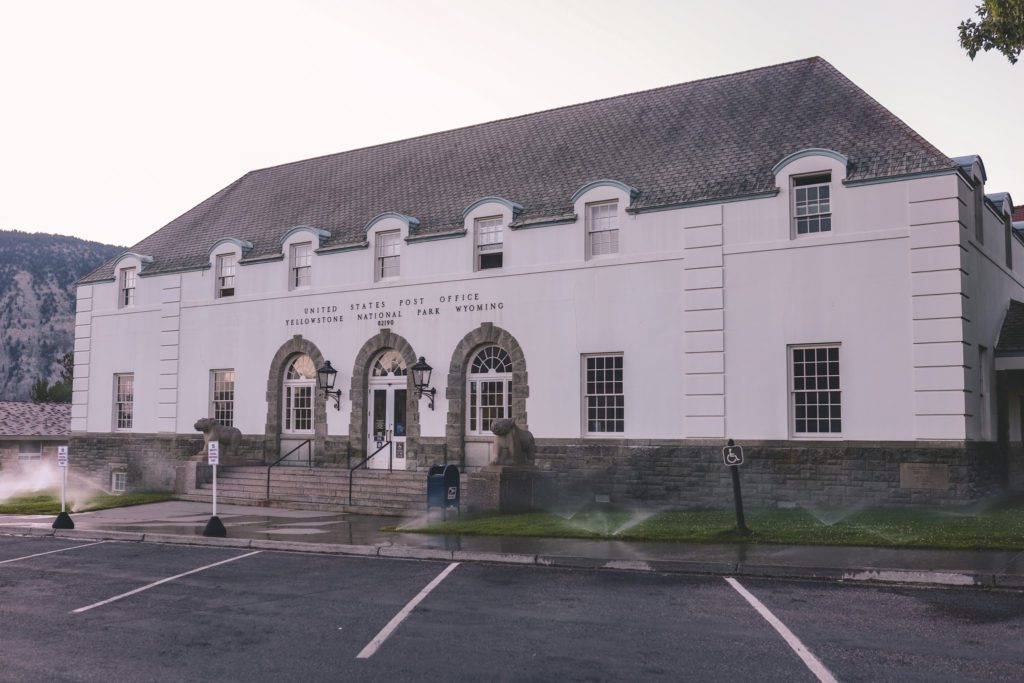
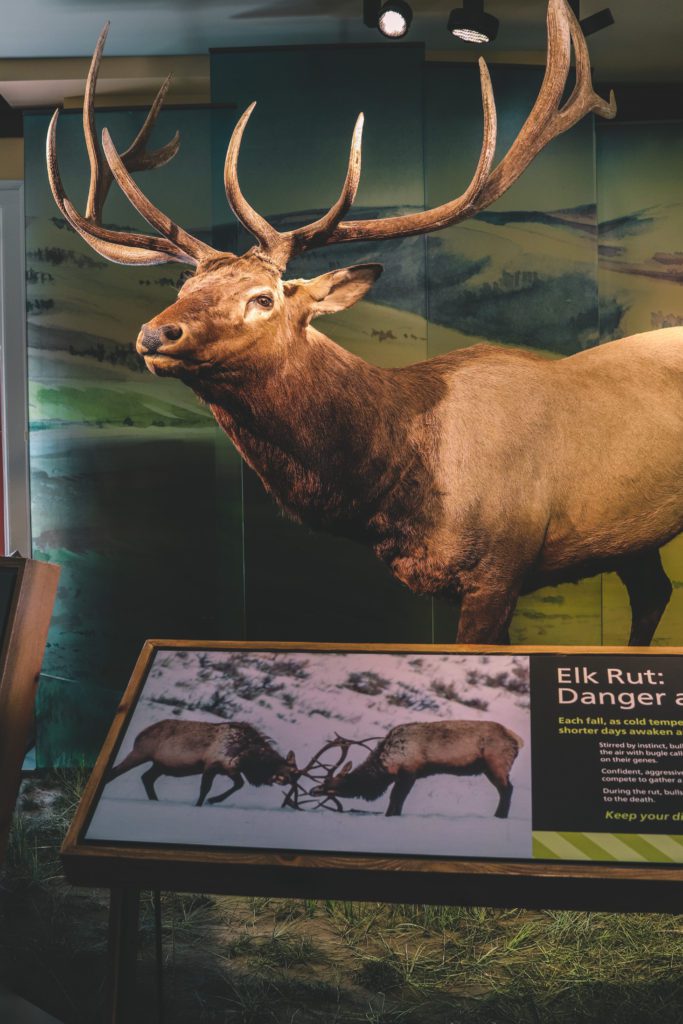

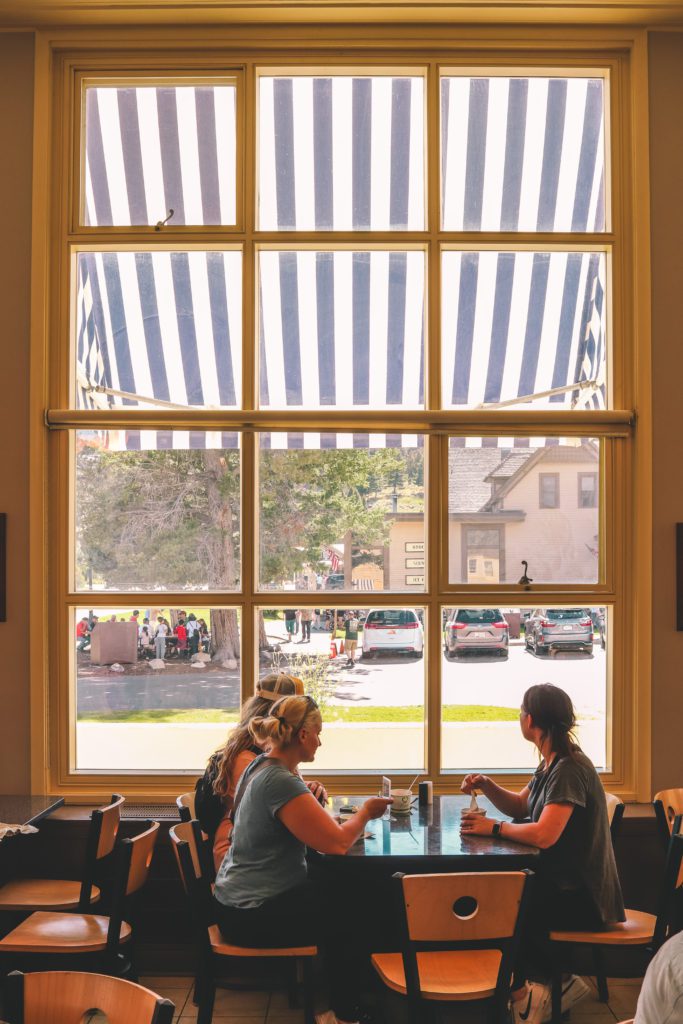
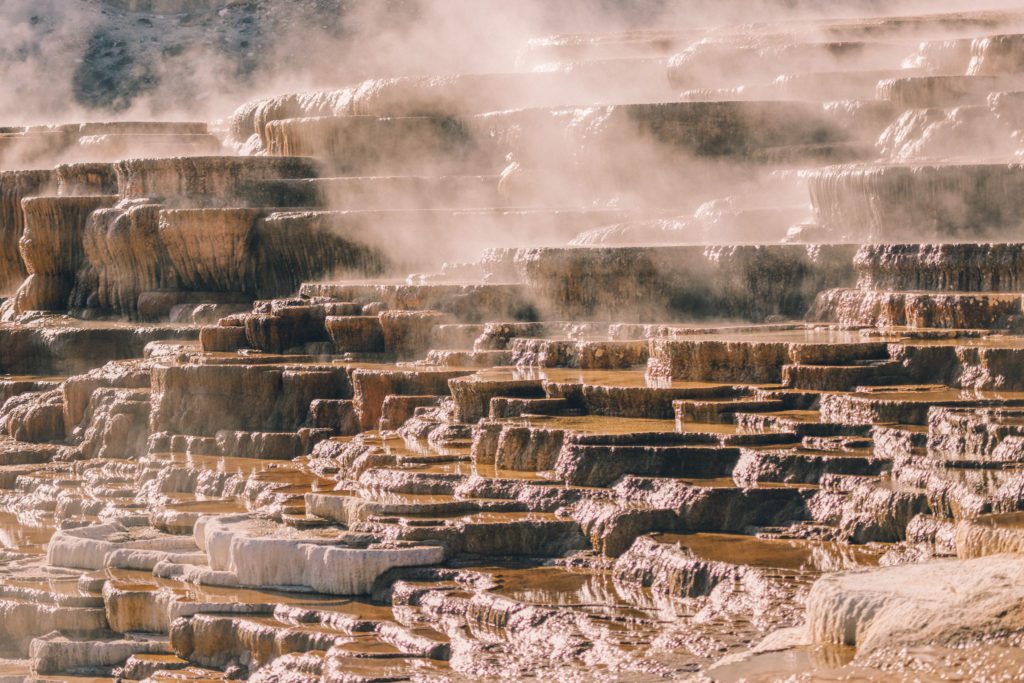
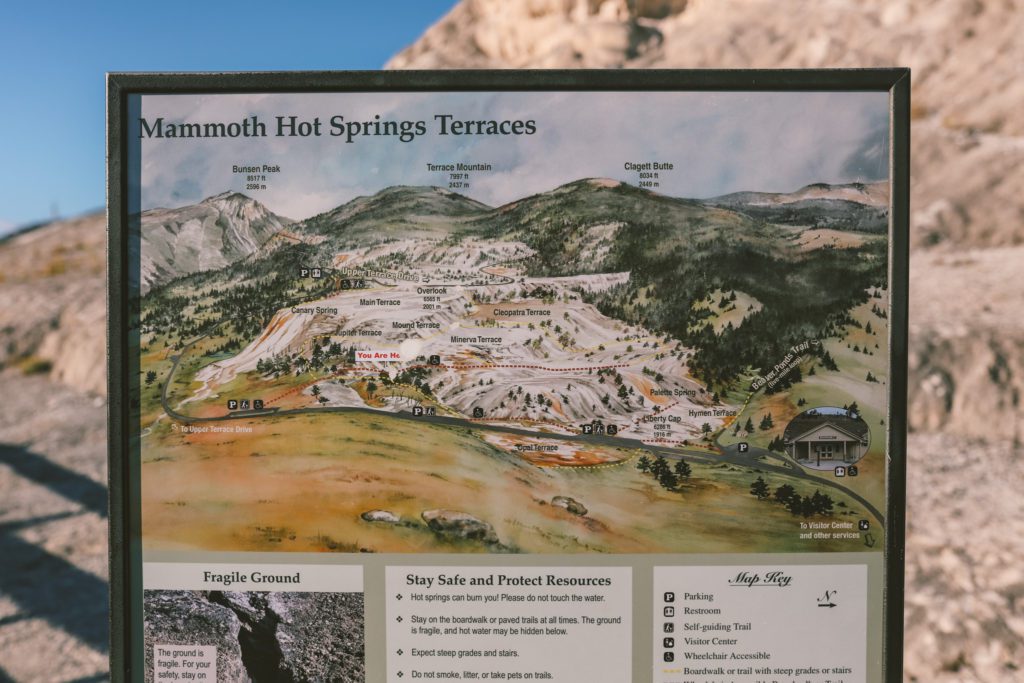
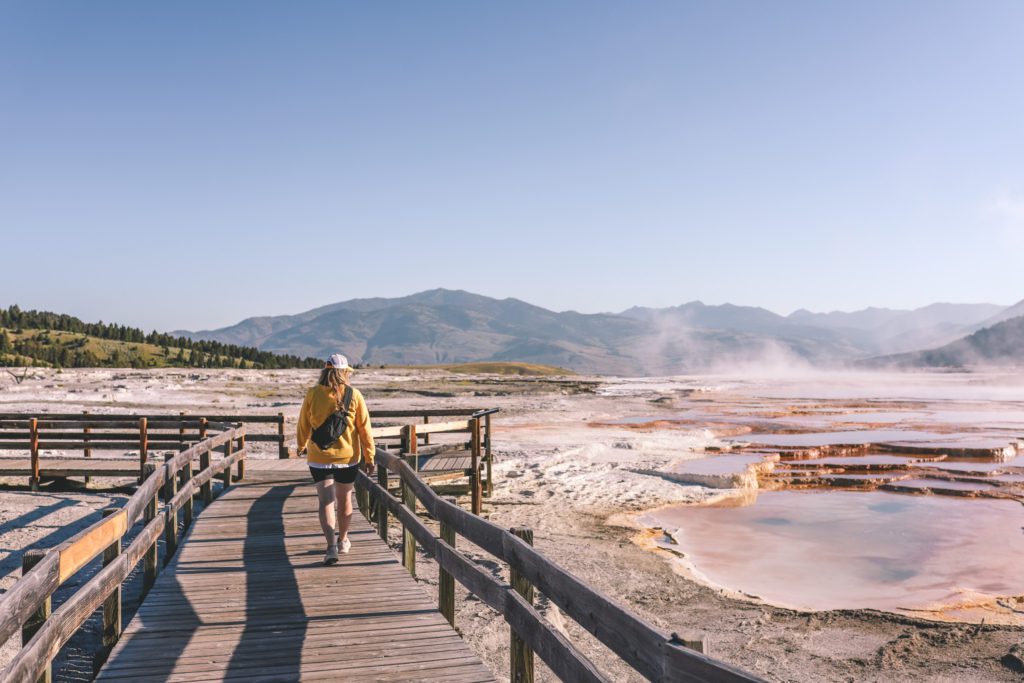

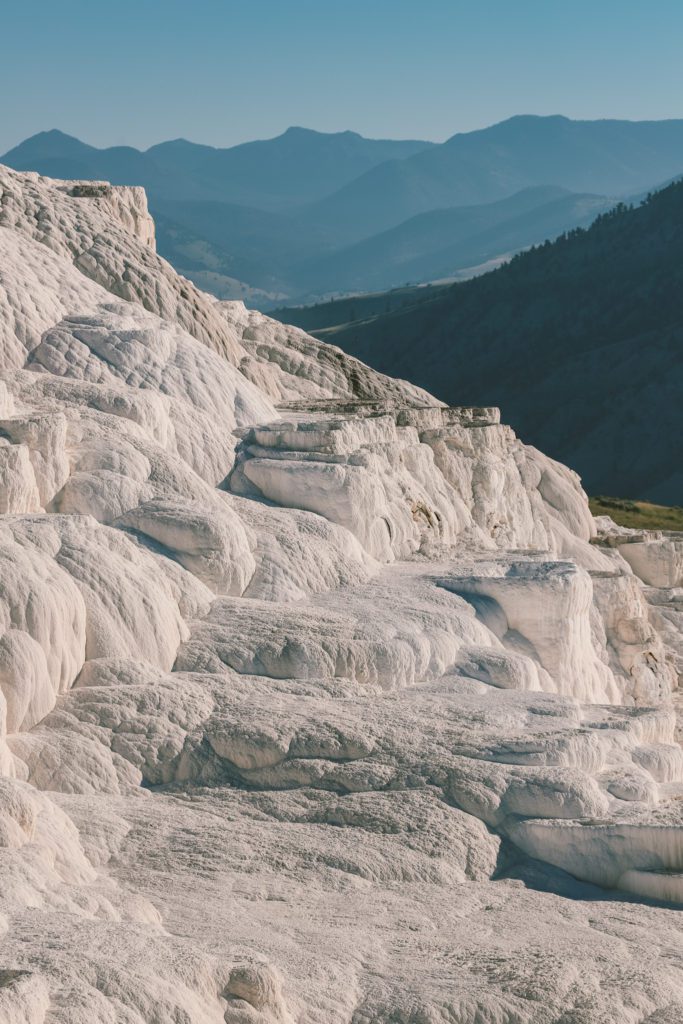

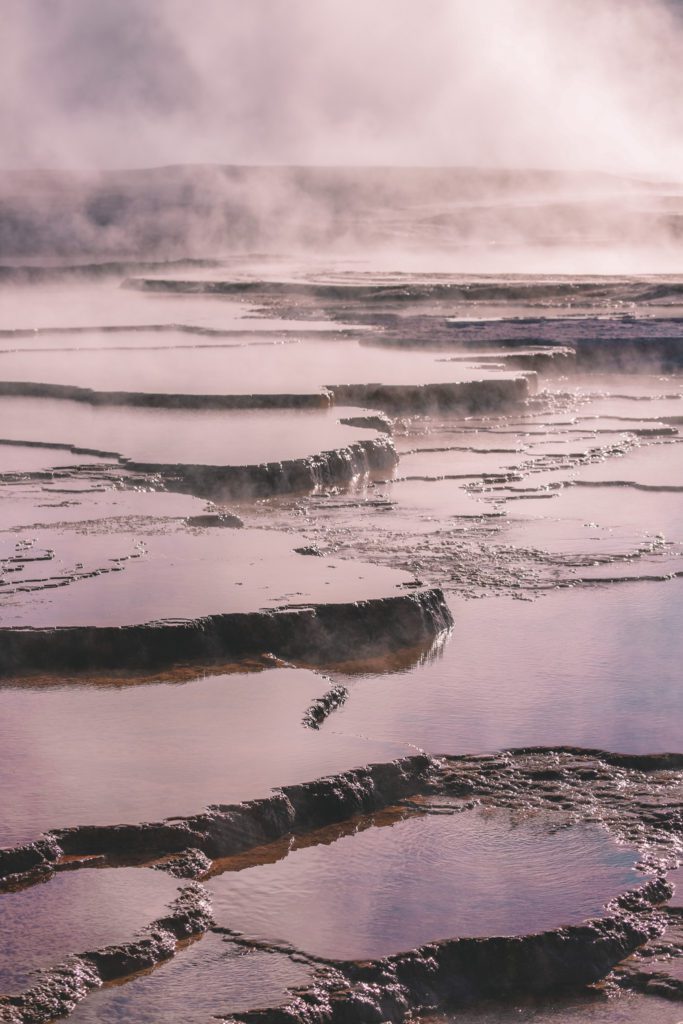
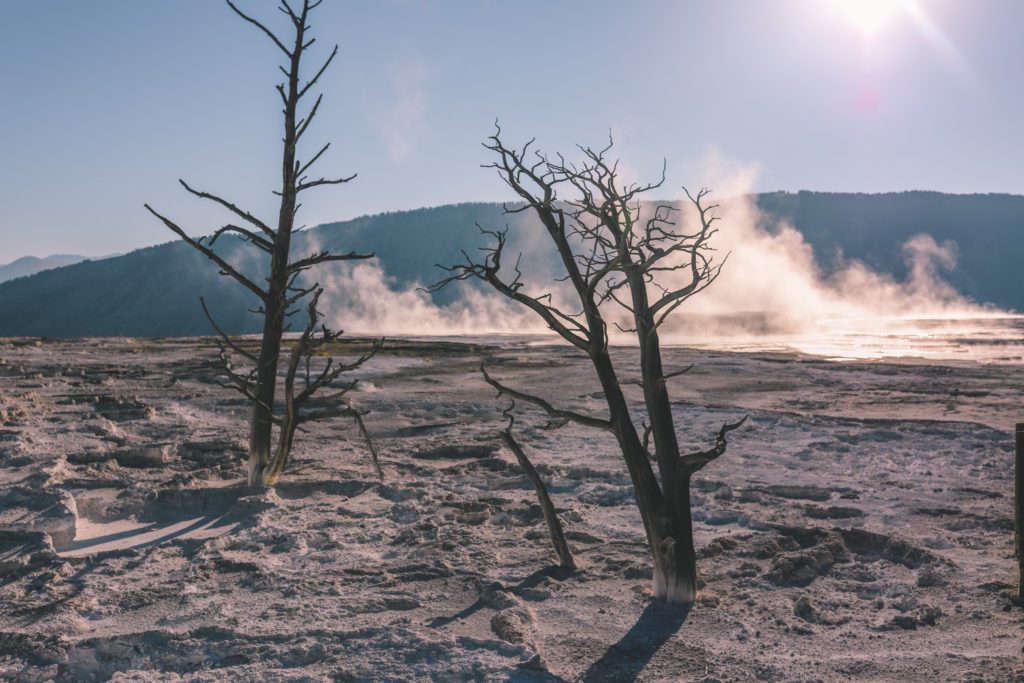

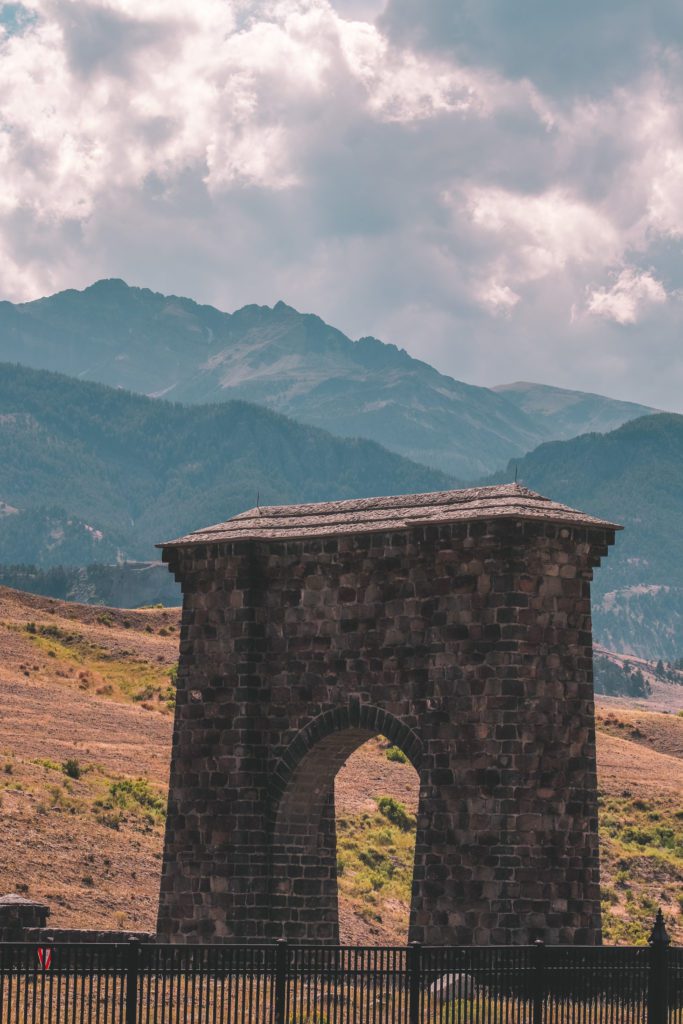
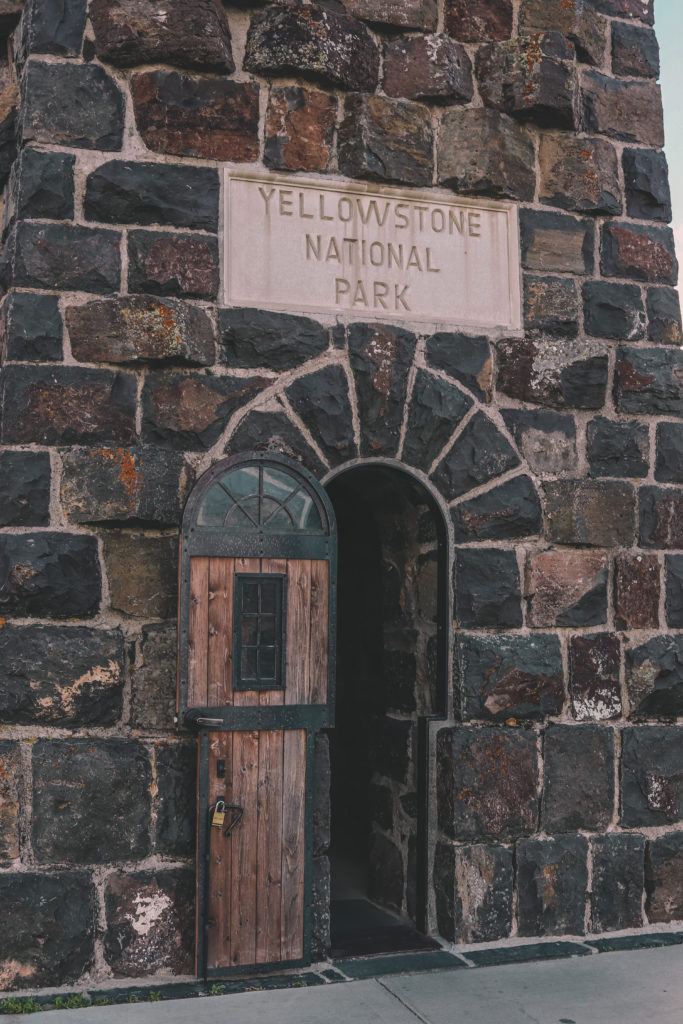
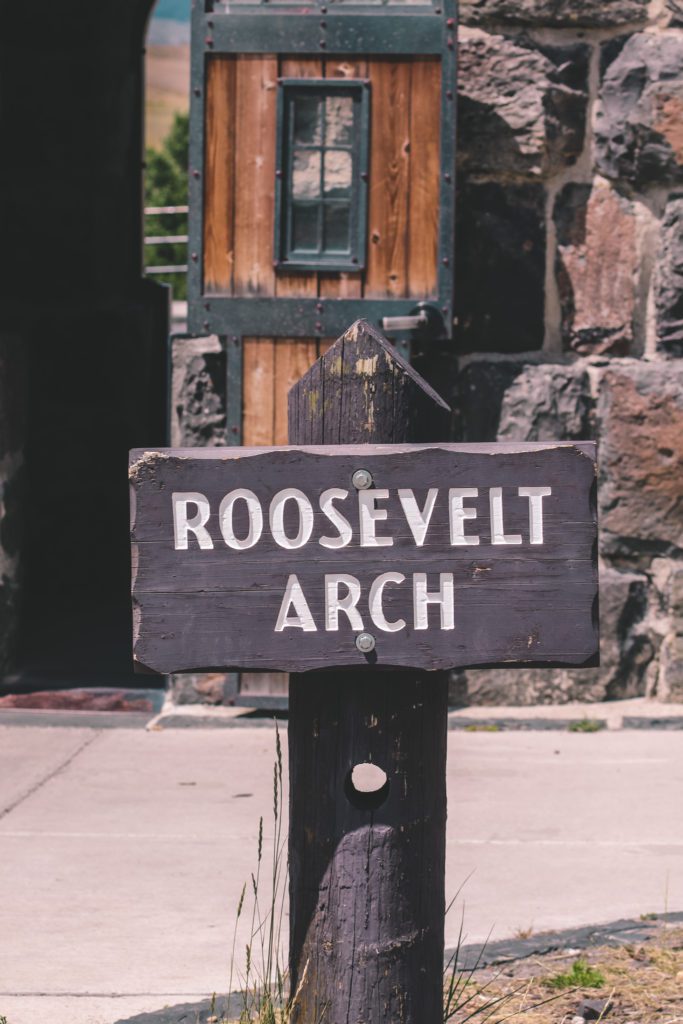
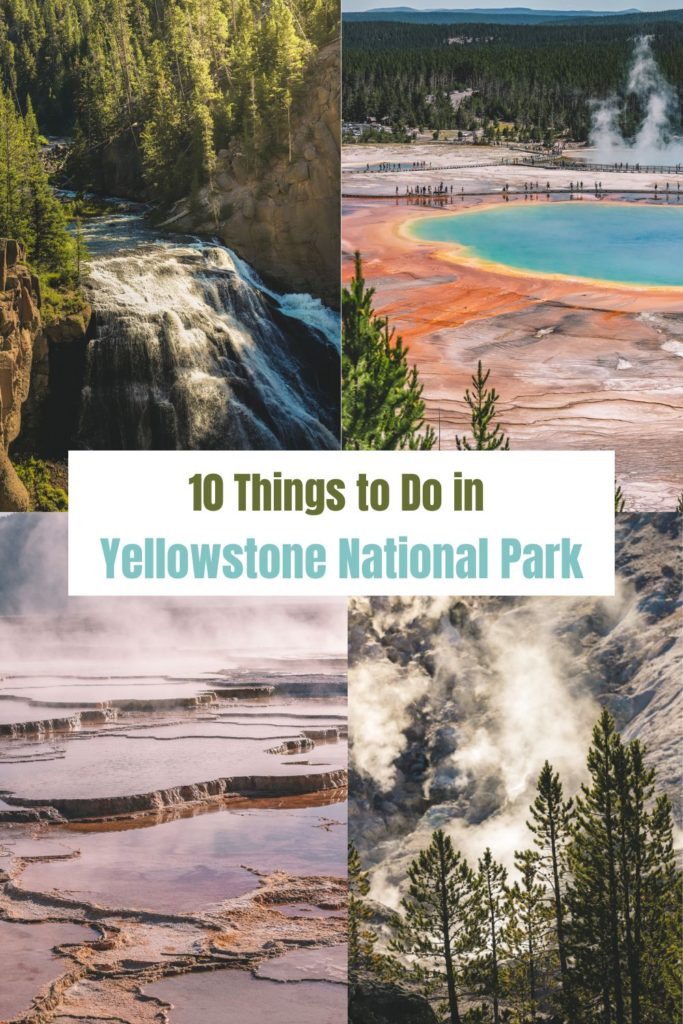
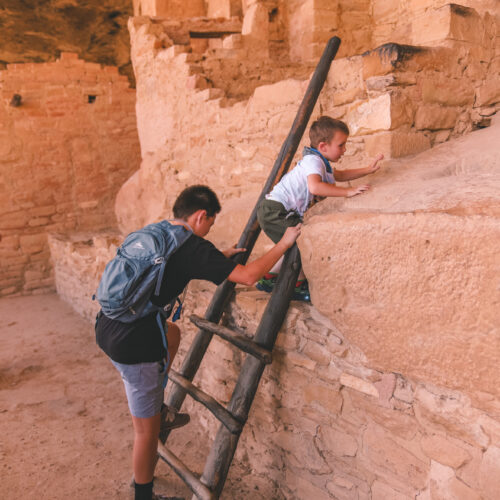
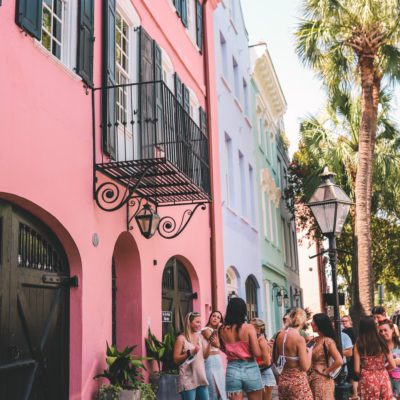

Leave a Reply